Over the Ranges.
We’re in Pallasca, a sleepy village in the barren mountains of the Ancash Department. It’s a sunny, calm Sunday and a rest day for us. France just won the Football World Cup, which we watched briefly with the police inside a small shop.
It’s probably no surprise that I was far more interested to hear what was happening on the notorious cobbled roads of Northern France in today’s stage of the Tour de France, though. And gripping racing it turned out to be.
We’ve been dealing with some rough roads of our own the past few days as we’ve made our way south – crossing two mountain ranges on the way – from Cajamarca, to now just a couple of days north of Peru’s legendary Cordillera Blanca. Here’s how the past few days have shaped up.
Hana contemplates an escape route through the traffic- and market-choked streets of Cajamarca on a Monday morning. This was the footpath right outside our hotel, where it was more or less impossible to walk without tripping over vendors.
We headed south on the Bikepacking.com Cajamarca to Caraz route, which we’re only planning to do part of, as we’ll cut off it to take a more direct line to the east side of the Cordillera Blanca. We rode quiet roads to Jesus, before turning uphill on dirt into barren limestone hills.
We’d left the city late, so rode until nearly dark, climbing steadily the whole time through wheat and barley fields and past rough mud-brick homes. People were bringing their animals in and donkeys passed by carrying bundles of firewood.
We spied a good looking grass terrace below one house, and asked if we could camp. A question met with an encouraging ‘Si – no problemo’. They even helped us pick a spot near their water supply and out of the wind.
Our tent was pitched as darkness fell, while the home’s señora watched our every move with fascination, asking if she could have first our solar light and then Hana’s bike gloves.
We leaned our bikes on a huge harvest of lentil bushes, the family’s supply for the year and which they only grew for their own use.
In the morning the Señora came back to feed the pig, and again stood quietly watching us pack. I gave her 10 Soles (NZ$4.75) as a donation to which she was very grateful – as were we for somewhere sheltered and quiet to camp and a water supply.
The road climbed higher into tussock and craggy hillsides as we approached 4000m.
Definitely a place where you appreciate big tyres and a tubeless set-up which allows low pressures without the worry of pinch flats.
As always, the long climb is worth it as a unique landscape unfolds.
The road drops finally and we wind our way along the flanks of the ridges, past small villages made from rammed earth or mud brick homes. Here a new batch of mud bricks is drying in the sun. The building in the background is rammed earth.
The landscape is a patchwork of different colours and textures. While the road rolls up and down relentlessly.
But eventually it drops into a long dusty descent and we hurtle down towards the wide valley of the Rio Huamachuquino.
Climbing again on pavement we head uphill towards Cajabamba as the sun sinks behind the ranges we’ve just crossed. It’s been a long day: 103km and 8 hours moving time.
Cajabamba’s a really pleasant town. We spent the night in a hostel and were reunited with Rich Lytle who had also put in a long day from a campsite only a couple of kilometres from ours. Tired from the previous day, we didn’t rush to leave in the morning and lingered over second breakfast with a view of the plaza.
We left town together, climbing once more on a quiet paved road. Every village we stop in we’ve met with friendly calls of ‘Gringo!’ and attract quite a bit of interest, even though cycle tourists pass this way quite regularly.
We stopped at Laguna Sausacocha for the night. A great place to stop, with a variety of restaurants and free camping right by the lake edge. The only downer was a dog that barked incessantly outside our tents in the early morning.
In the morning we rode on early to Huamachuco and resupplied there, knowing we would not see another shop for 36 hours. The town was surprisingly hectic but eventually we found a small supermarket and some fruit stalls on the edge of the market. Some friendly women, undoubtedly poor, insisted on giving us bread and some pre-cooked beans to take with us.
Pavement led out of town until we turned onto a dirt road that headed into the mountains. Cloud built up and the wind drove drizzle into our faces as we climbed into some spectacular country – the best mountain terrain we’ve seen so far in Perú.
A series of pretty lakes fill some tussock basins below Cerro Huylas (4672m), and as soon as we saw them we knew we had to camp there. We’d planned to ride further but sometimes a place calls you to stop and soak up its atmosphere.
The rain stopped as we found a campsite and settled to admire the landscape with a hot drink of coca tea. We walked around the main lake – Laguna Larga Norte – exploring our home for the night.
Looking back at camp and a sublime landscape.
Sunset photography plans were terminated with a couple of hours of steady rain, but after dark the clouds cleared to reveal the best view of the Milky Way we’ve had yet in South America. Something to look forward to more of now we’re south of the Equator.
Despite the clear skies, the wind really kicked up during the night and our tents took a battering until dawn, when very light snow began to blow around us too.
The thermometer read zero as we packed camp, but it was no doubt several degrees colder with the windchill from the gusts hurtling down from the saddles above. We rode off wearing a lot of clothing and didn’t generate much body heat even with steady uphill riding at above 4000m.
This was the highest habitation we’ve seen yet in Peru – a windswept arrangement of rock walls containing sheep and llamas and a couple of very basic shacks for the hardy inhabitants.
The landscape highlight of Perú so far, despite the cold. Just a perfect place to be riding a bike.
But ride past another ridge and Perú reveals its environmental dark side: mining. As we’re discovering, one moment you feel as if you’re riding through rarely visited mountainscapes and the next you can see a mine in the distance.
Mining is one of Peru’s economic mainstays; it’s one of the world’s biggest producers of base and precious metals and is currently the third largest producer of copper and zinc in the world. Peru is also a major producer of gold and silver, among other minerals. Laws in Peru are designed to support and encourage investment in this industry and most of the world’s biggest mining companies have operations in the country, as well as countless smaller domestic operations.
Sadly this is taking a severe toll not only on the immediate environment, but there are also many well documented cases of ground water contamination and heath problems for citizens living in close proximity to mines.
We’d read a bad report on bikepacking.com about the condition of the road from where our route left the LI-115 at Tamboras through to Santa Clara de Tulpo, so proceeded with caution. But our fears about its lack of rideability weren’t realised and with our big tyres and lightish touring loads it proved to be a fun challenge with some rough and rocky sections and some steep climbing, but still plenty of fun and 100% rideable.
We stopped in Santa Clara for an afternoon snack and a small resupply, but the offerings were scant.
Our next stop was in Mollebamba where we had to rouse the restaurant owner to boil us some water for a coffee, while we sat down and figured out our next leg. Richard, in search of some solo adventure decided to deviate from the Cajamarca-Caraz route and intrepidly head east towards a section of Inca Trail he’d spied on the map. I’ll report back as to how he got on.
And us? Well we spotted some tempting alpine lakes at 4100m in the high country surrounding the Acuán (or Rosco) Range, so also decided to skip the remainder of the Cajamarca-Caraz route and head more directly south – crossing the range before dropping down towards the northern end of the Cordillera Blanca. This also serves to take us more directly towards the eastern side of the Cordillera, which is where we are headed first.
After settling on our plans we decided to call it a day in Mollebamba. There was a several-day festival kicking off and this relaxed town had a pleasant atmosphere. We checked into the rustic hospedaje (where even the upstairs rooms had dirt floors!) and proceeded to hang out with the locals. People were quite ready to chat over a beer in the plaza and we were invited to someone’s shop for bread and coffee.
Between us and the Acuán Range lay the Rio Tablachaca canyon, which we needed to drop into and climb back out of to Pallasca (the bikepacking.com Cajamarca–Caraz route heads down the canyon at this point). On the way down we passed the picturesque Mollepata Alto and then the main village, both perched on the edge of the void with spectacular views of the canyon.
The floor of the canyon here is still at 2000m, but it was a balmy 25 degrees, dry and dotted with cactus and tangled scrub. That’s our road up to Pallasca climbing out the other side. Dropping into the canyon was an amazing descent down an intestine-like wiggly paved road. We parted ways with Richard at the bottom.
We were just going to take a half day of rest in Pallasca, but this peaceful, pretty village won us over and we stayed for a day.
From our hospedaje room (which has a little balcony onto the plaza) we can look back at the terrain covered over the past couple of days.
And in the morning and evening the clearest, warmest light brings a special quality to the town and its surrounding landscape. It’s a place of light, breeze and wide, wide space.
Do you enjoy our blog content? Find it useful? We love it when people shout us a beer or contribute to our ongoing expenses!
Creating content for this site – as much as we love it – is time consuming and adds to travel costs. Every little bit helps, and your contributions motivate us to work on more bicycle travel-related content. Up coming: Gear reviews.
Thanks to Biomaxa, Revelate Designs, Kathmandu, Hope Technology and Pureflow for supporting Alaska to Argentina.

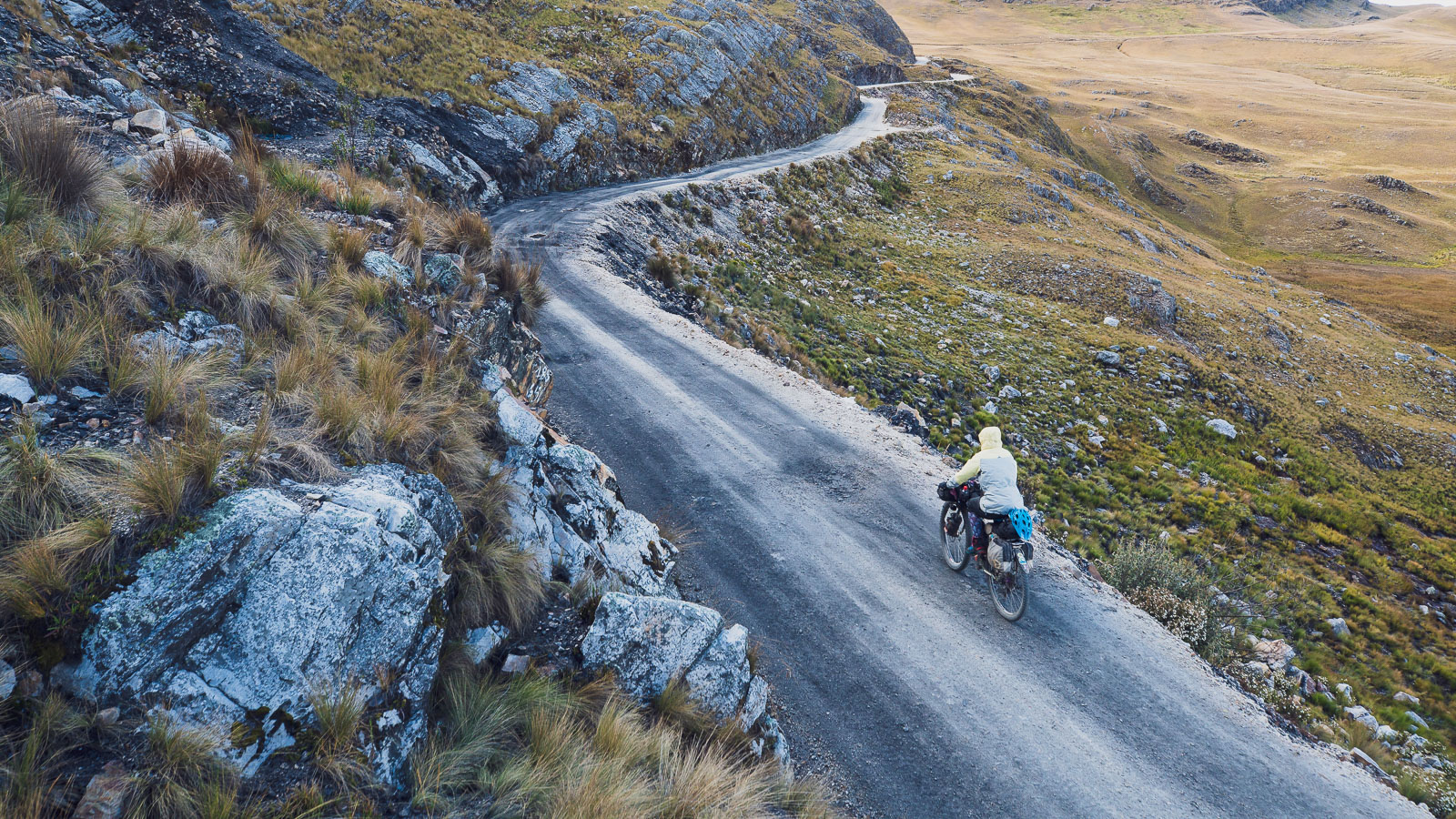
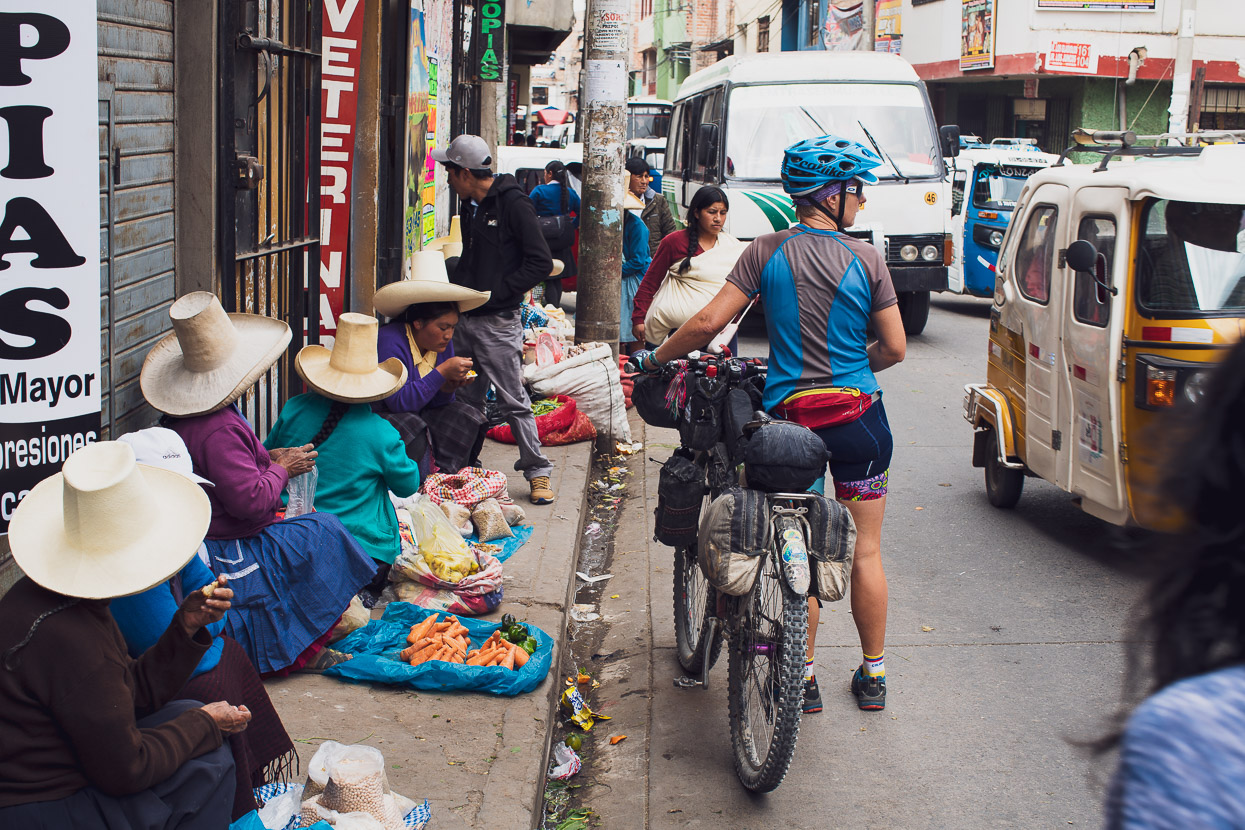
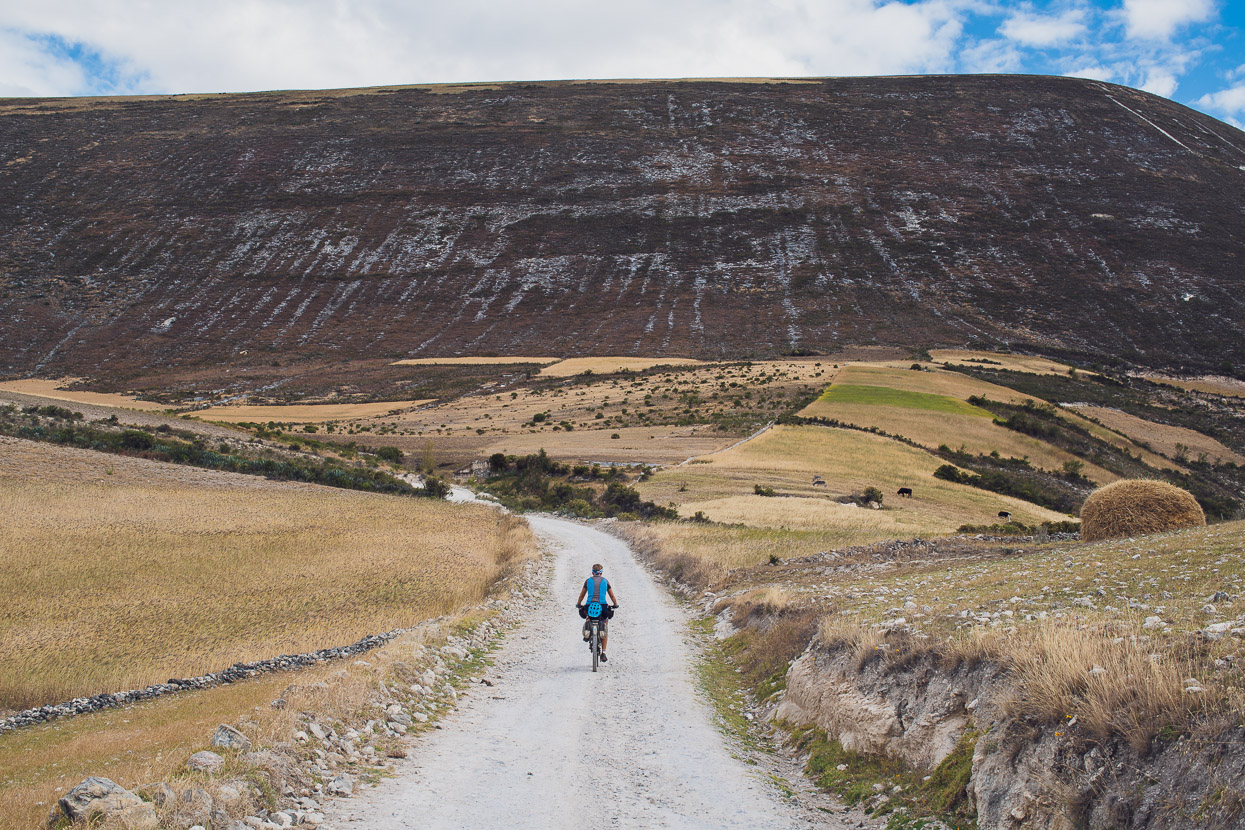
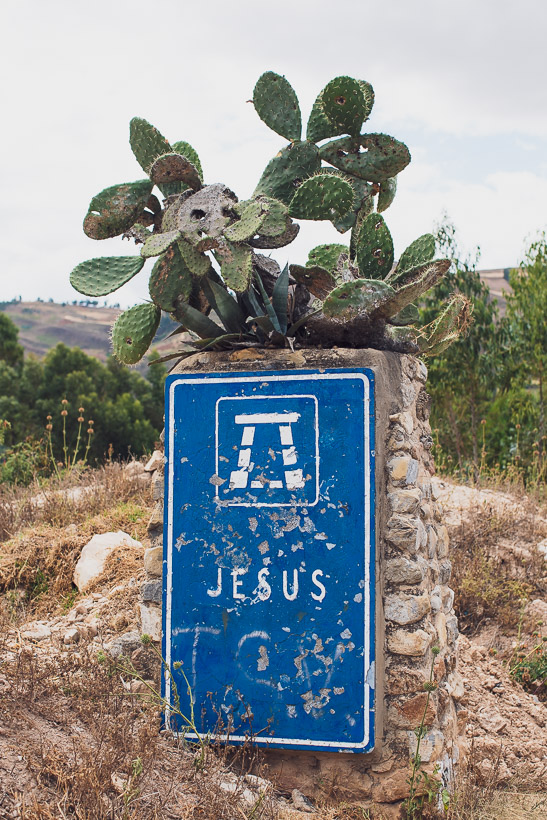
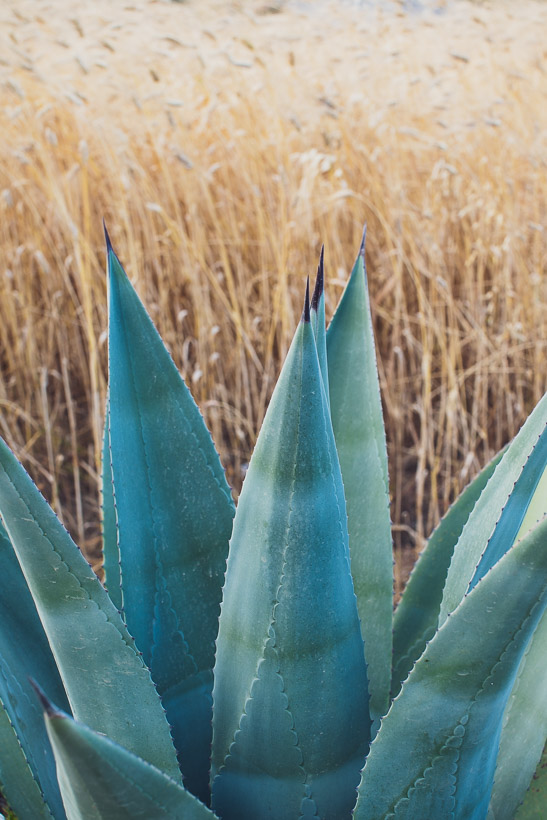
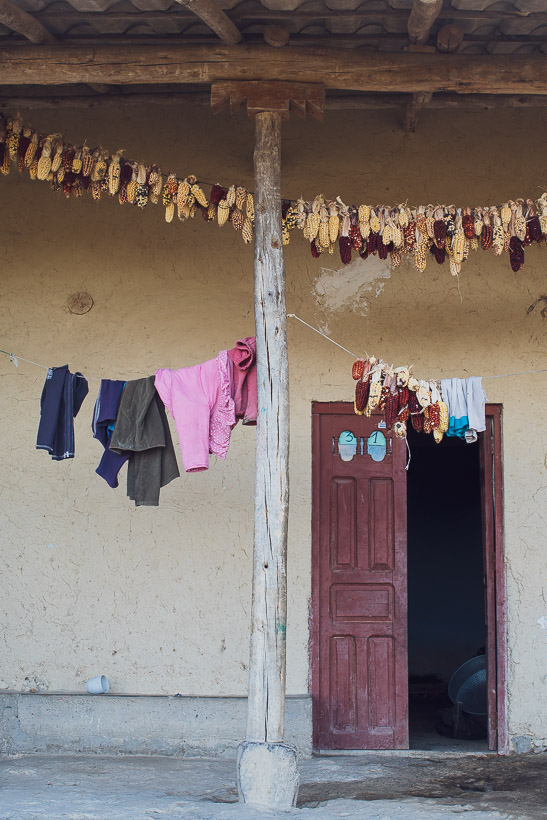
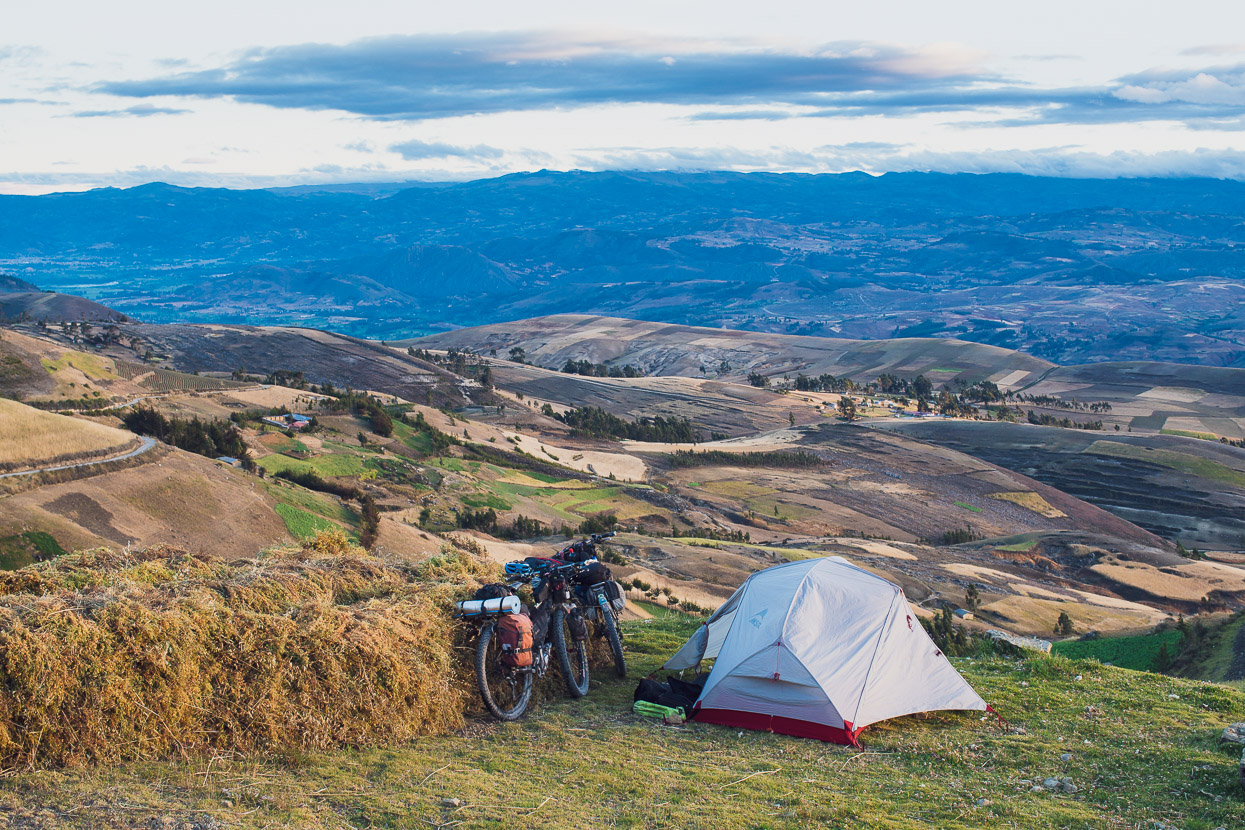
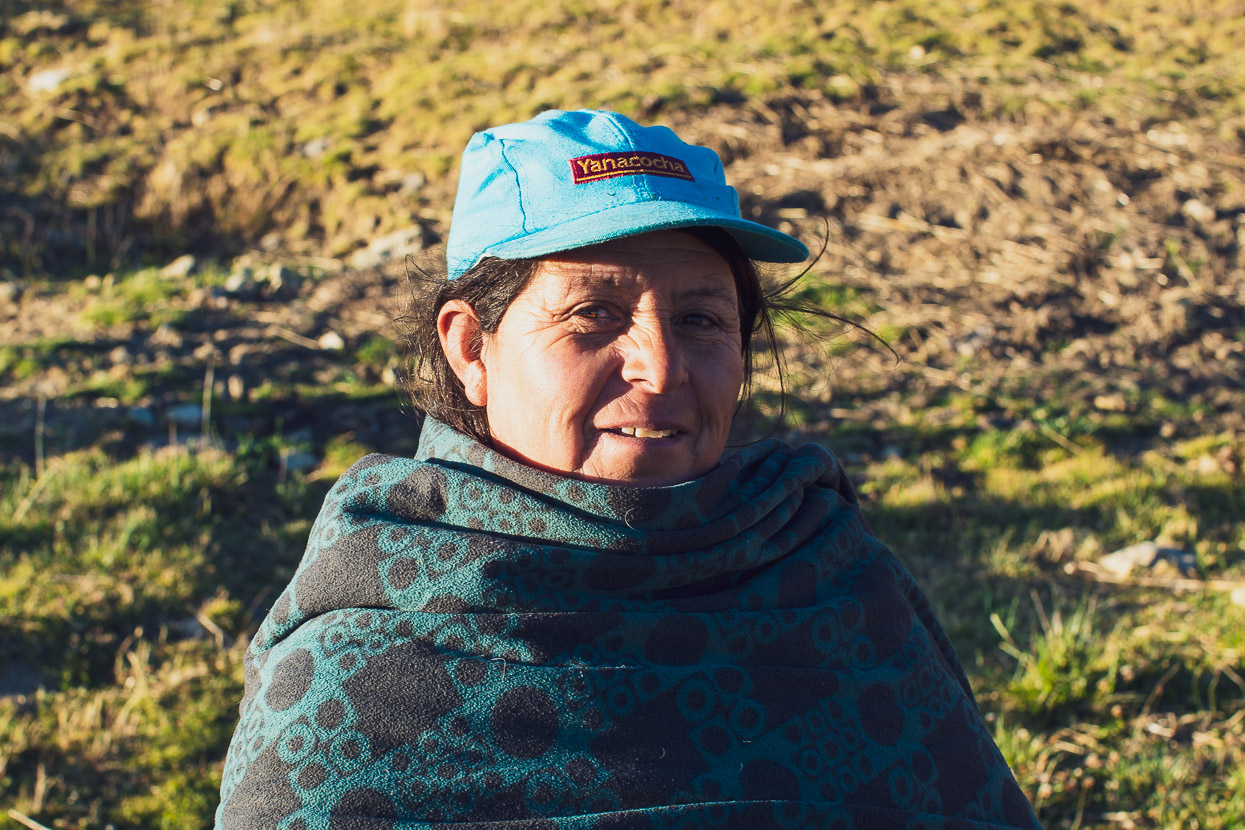
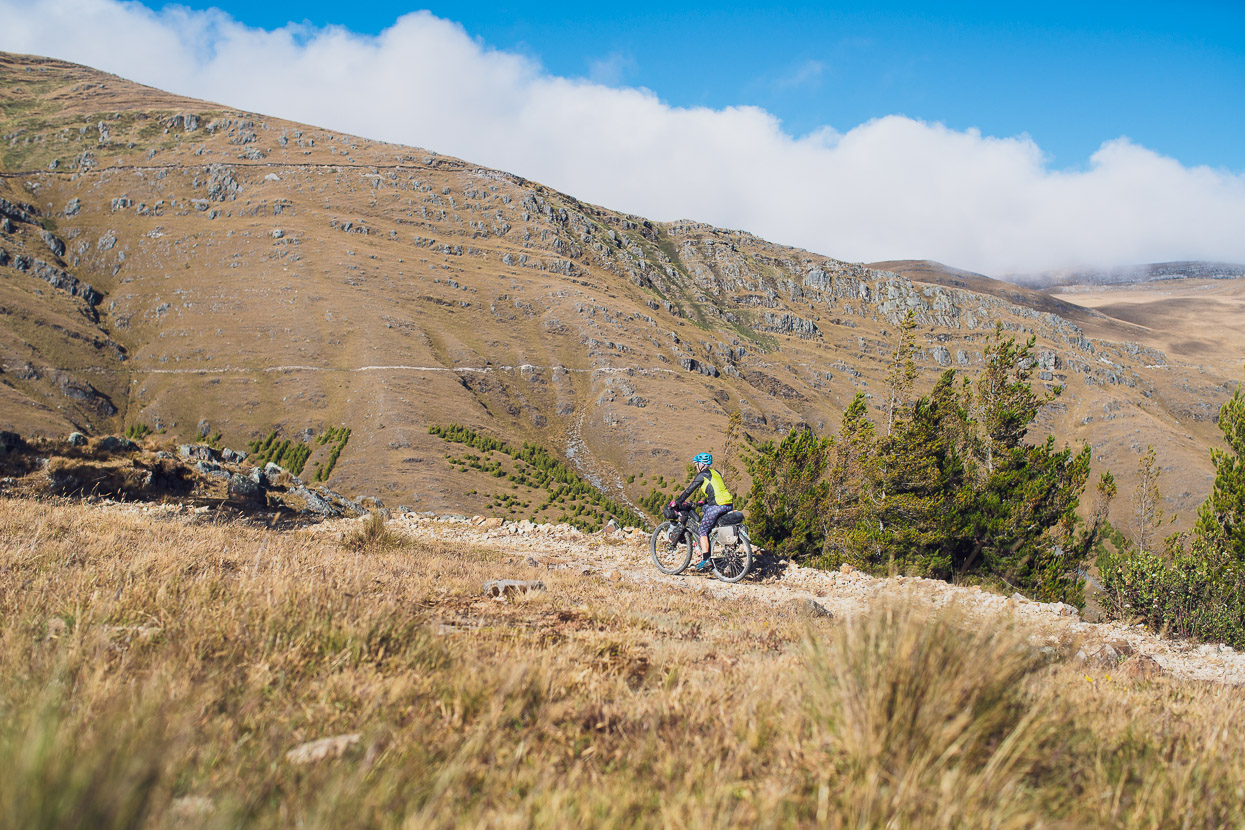
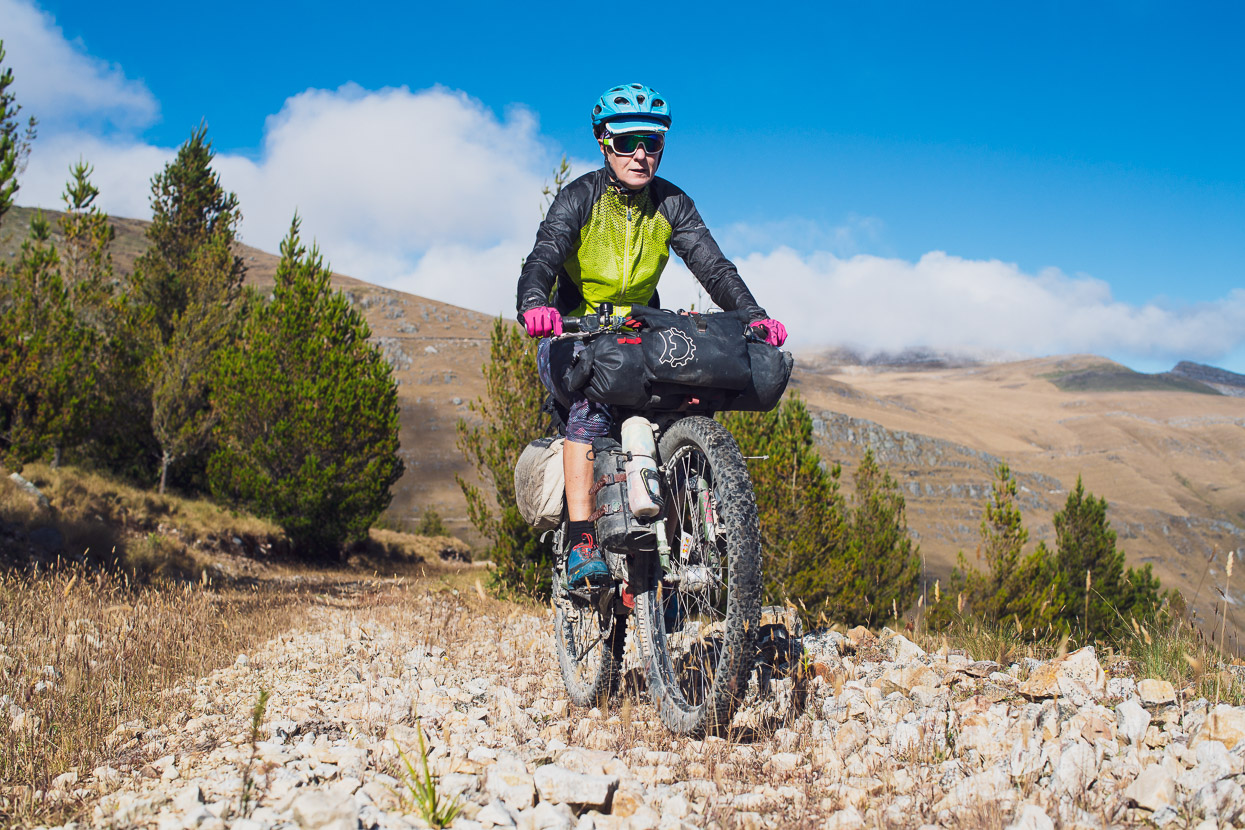
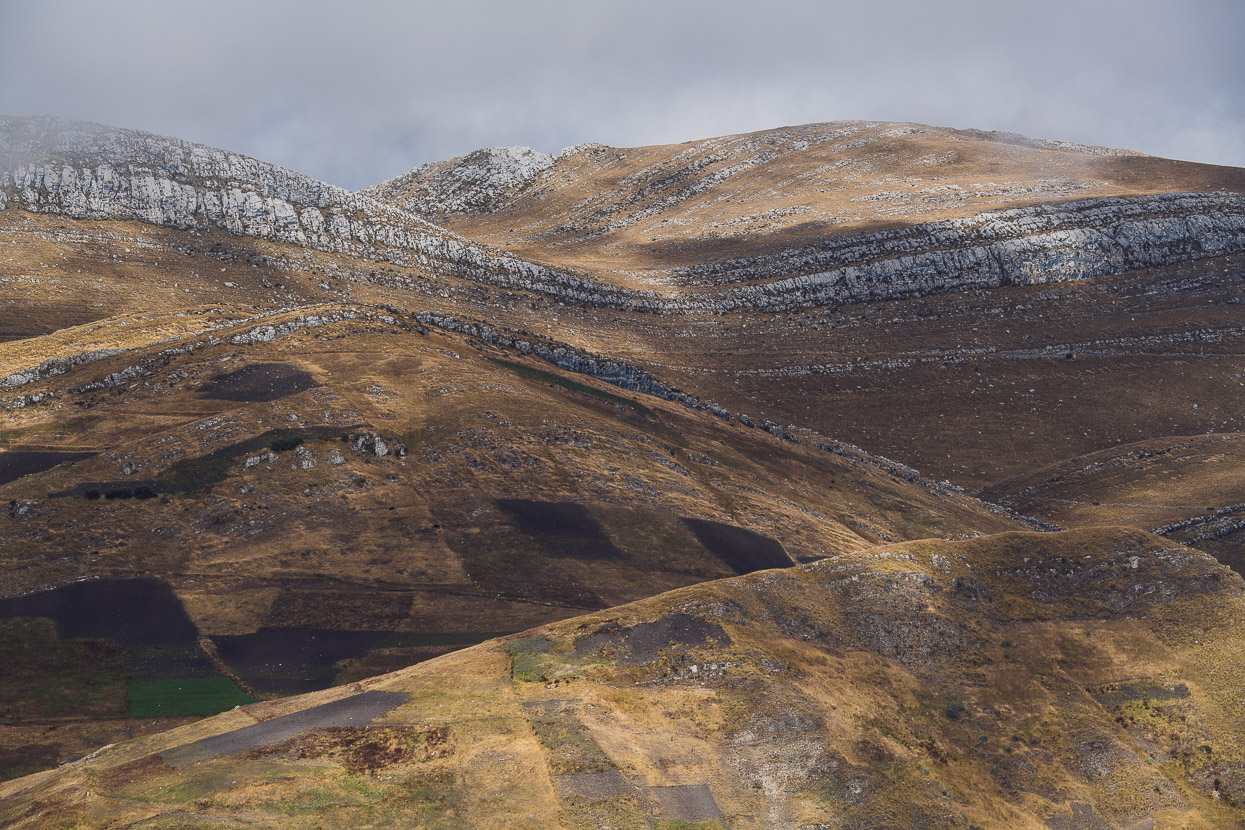
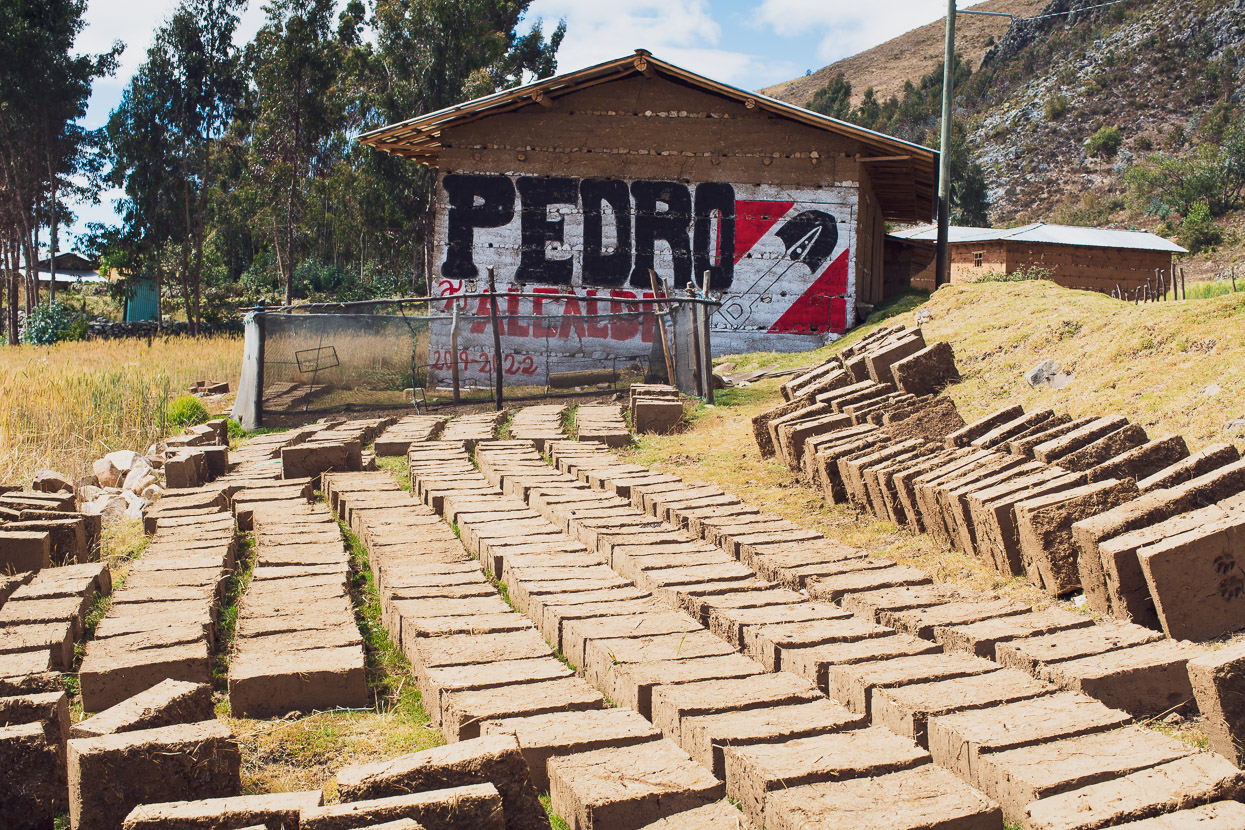
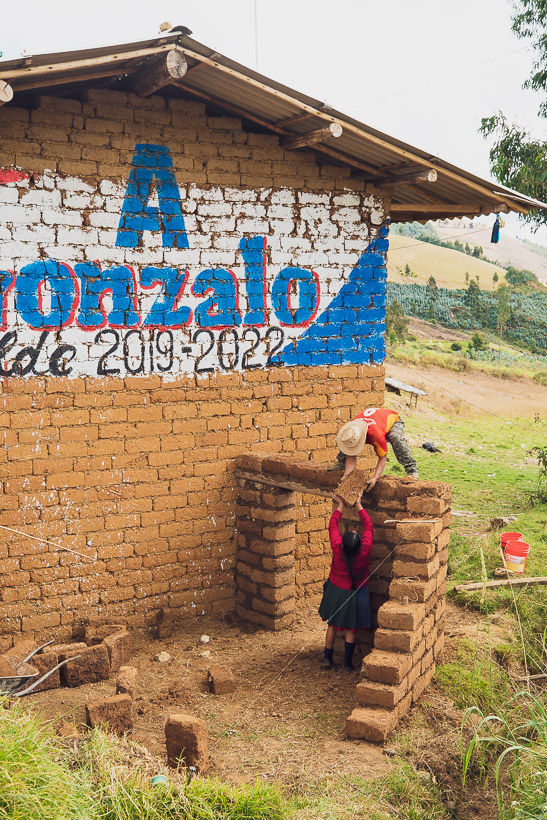
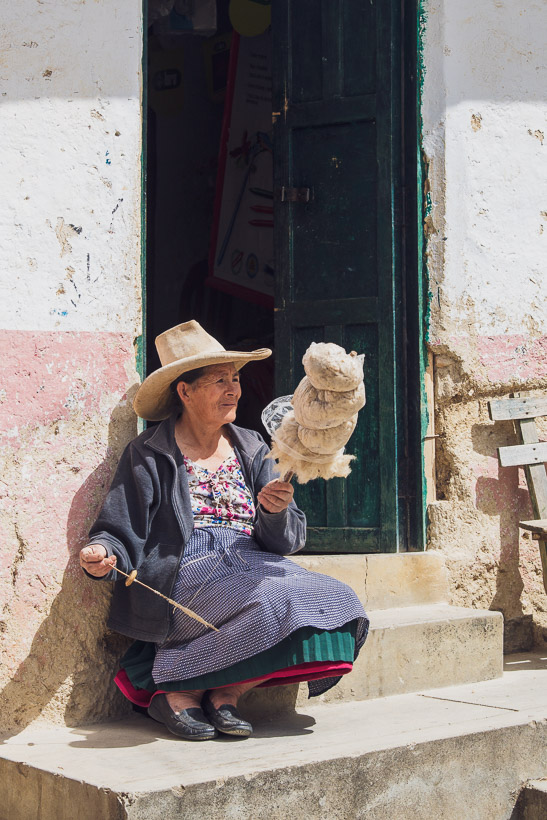
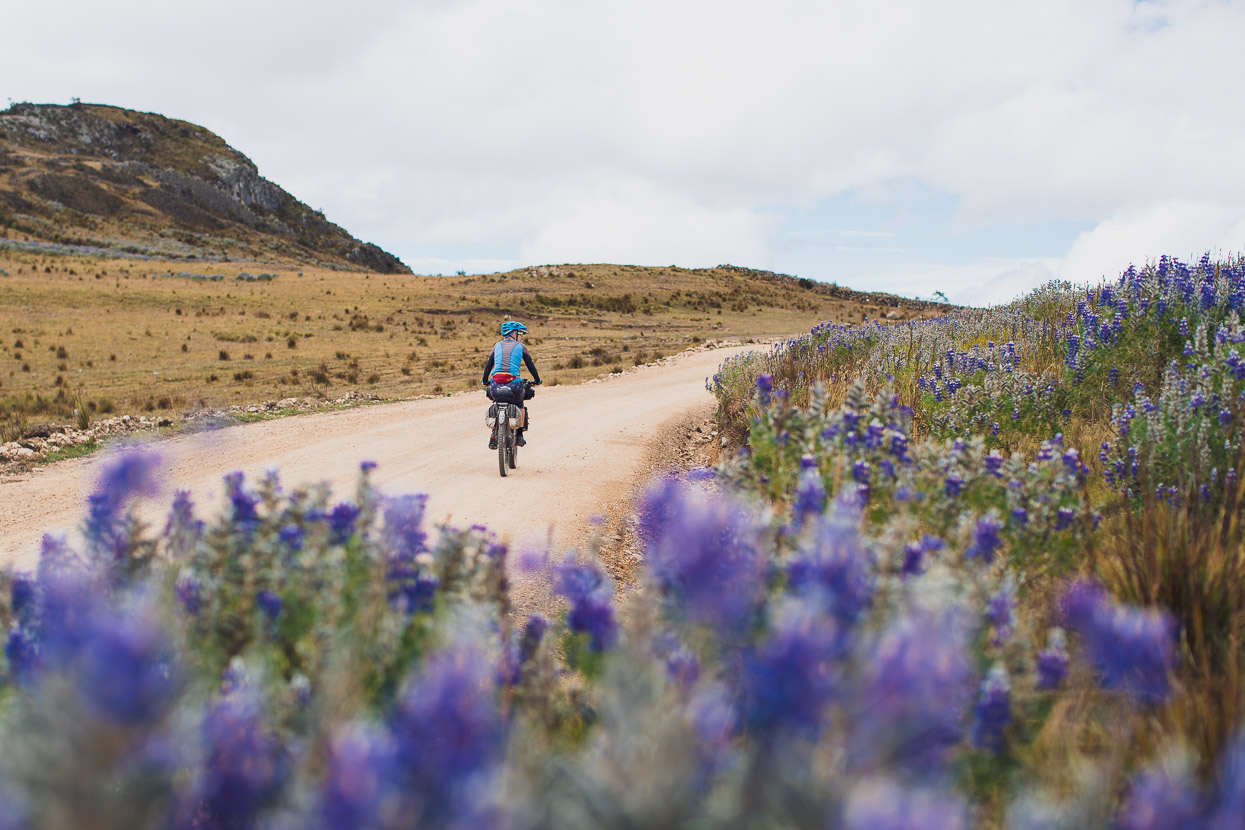
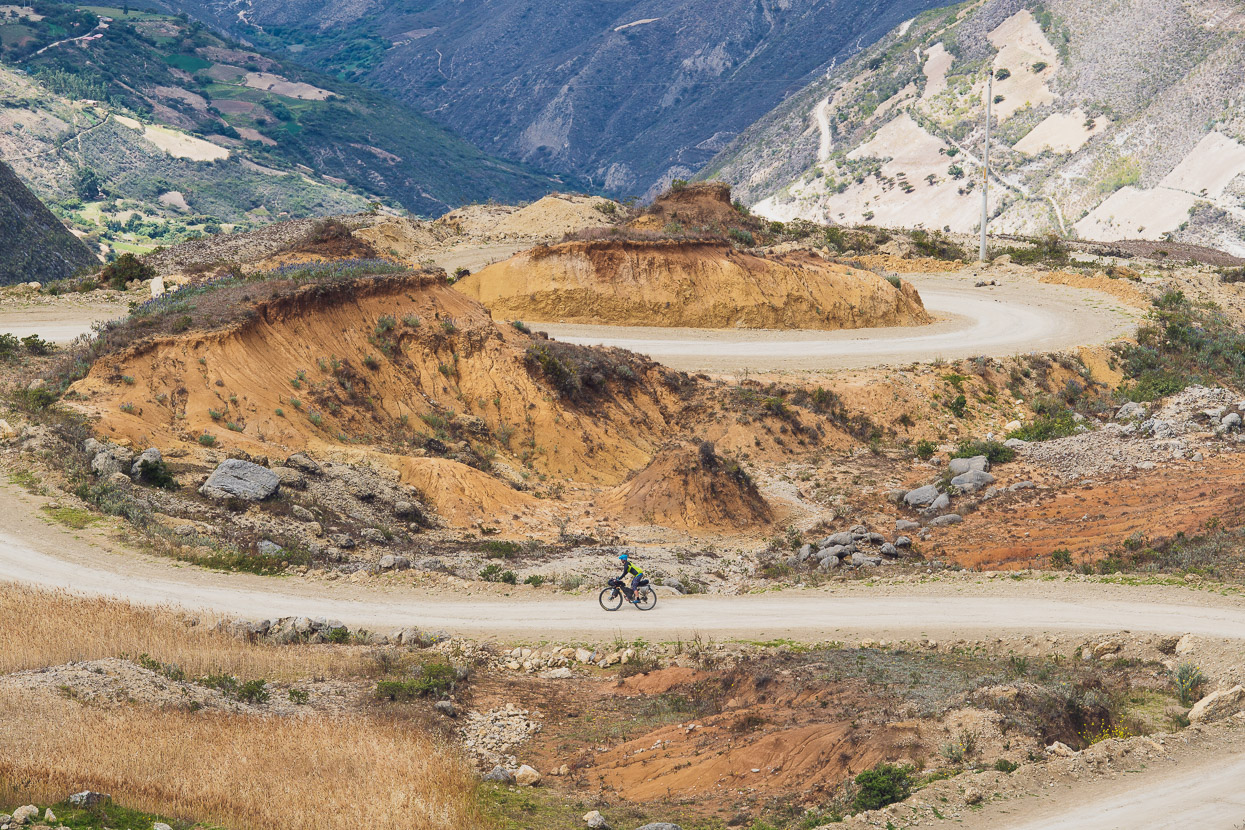
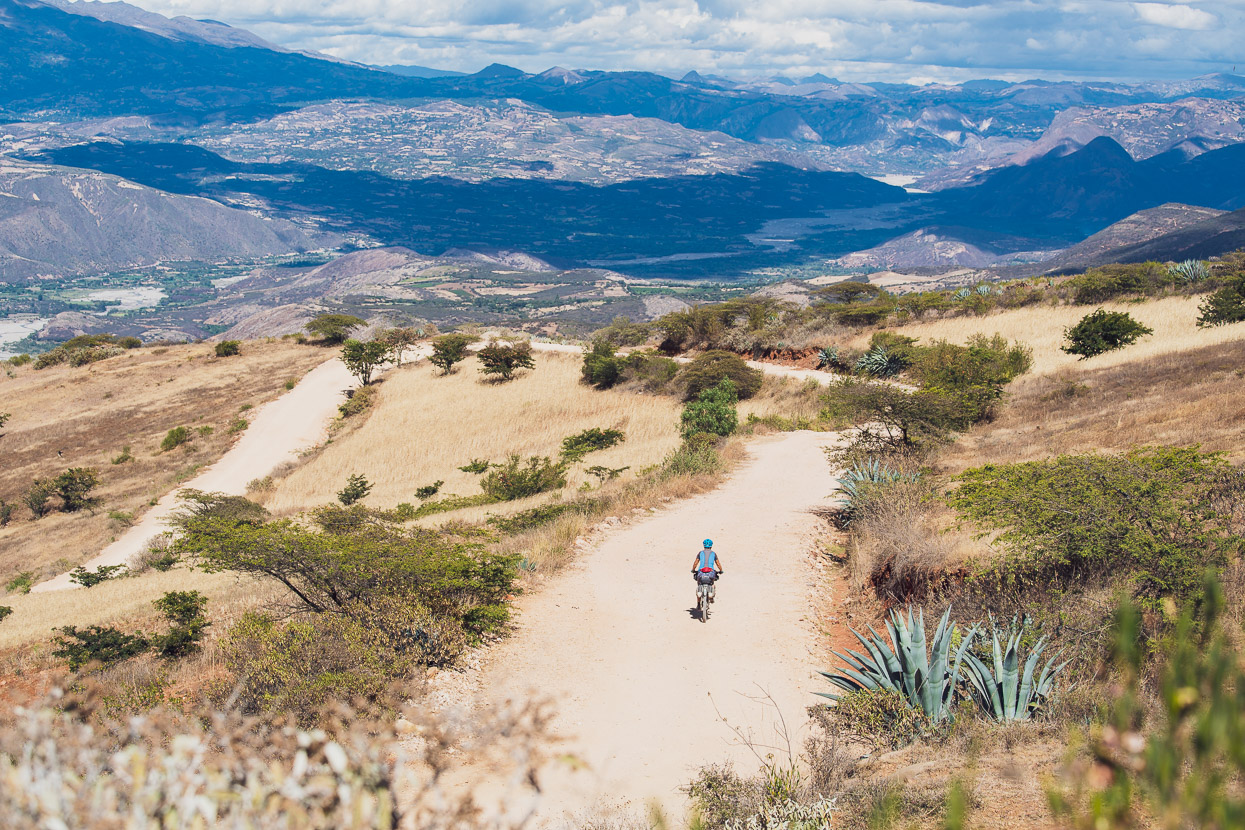
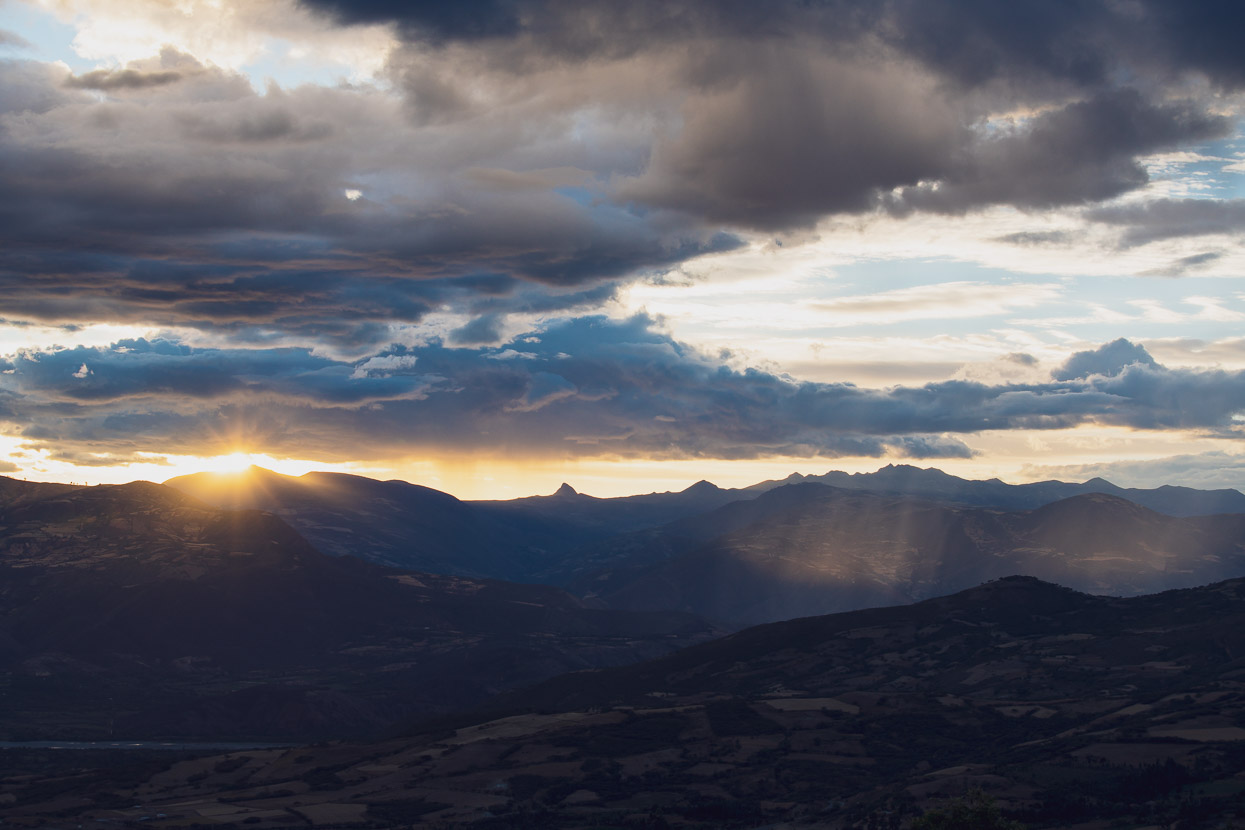
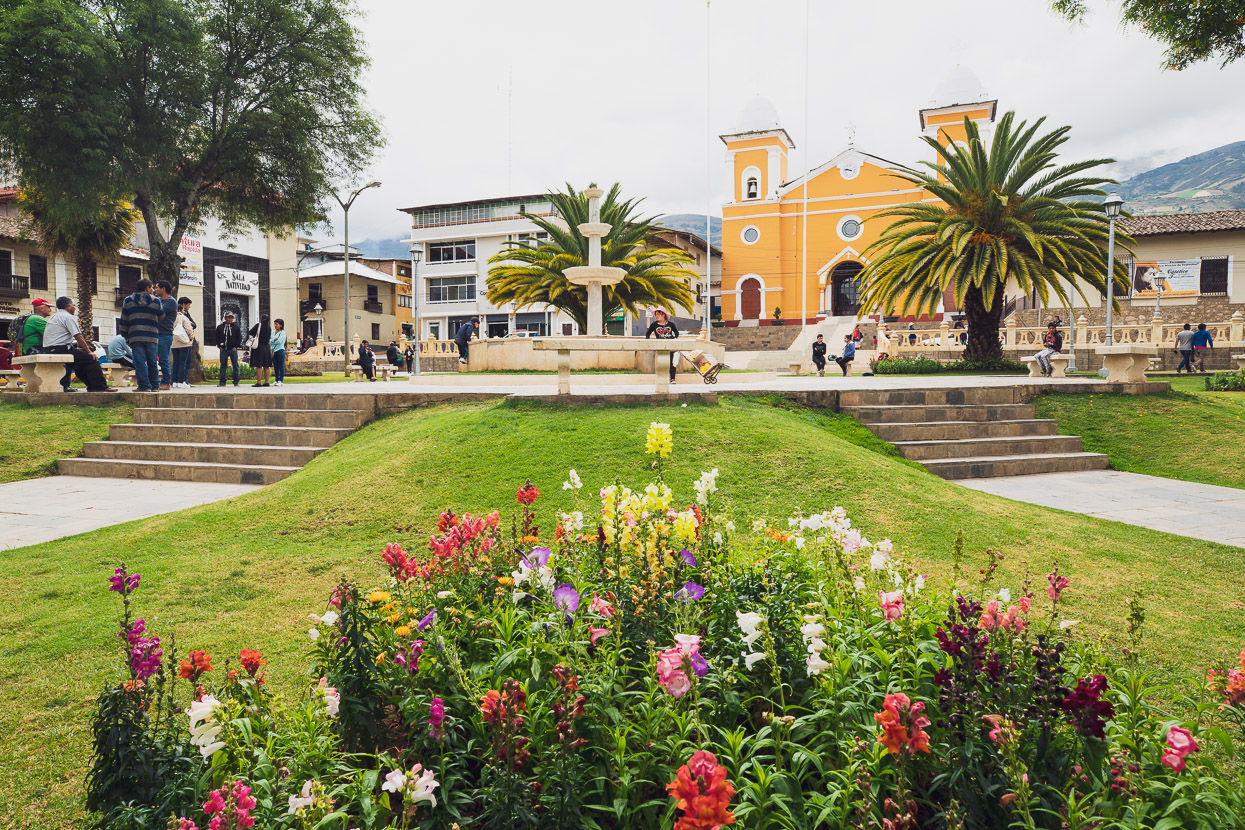
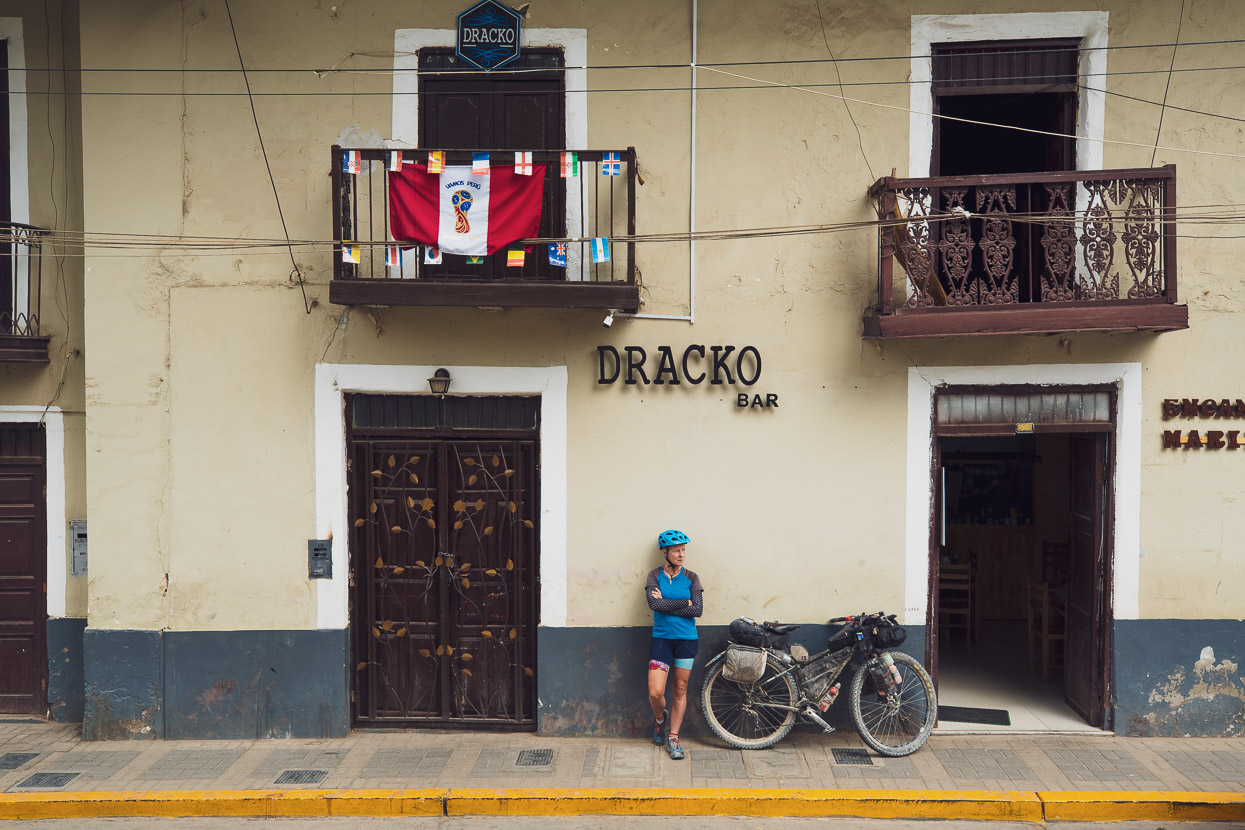
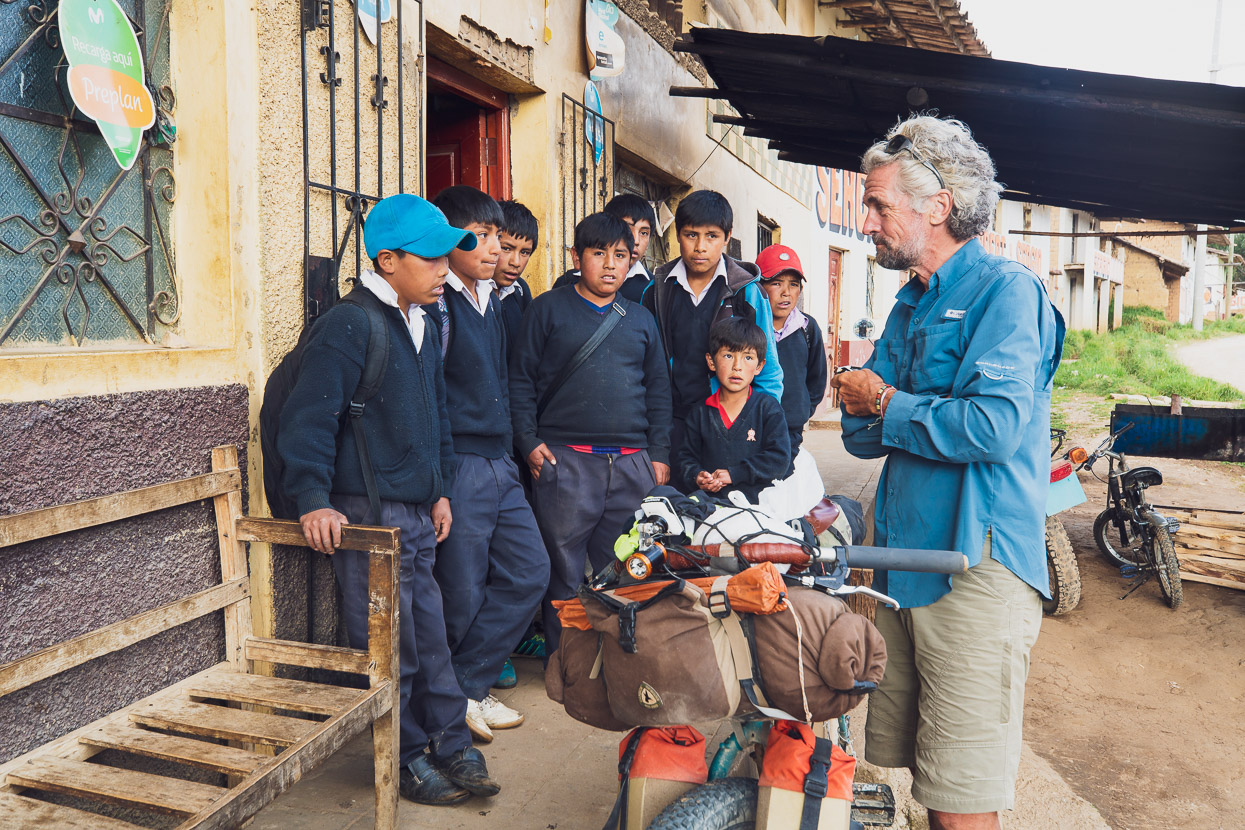
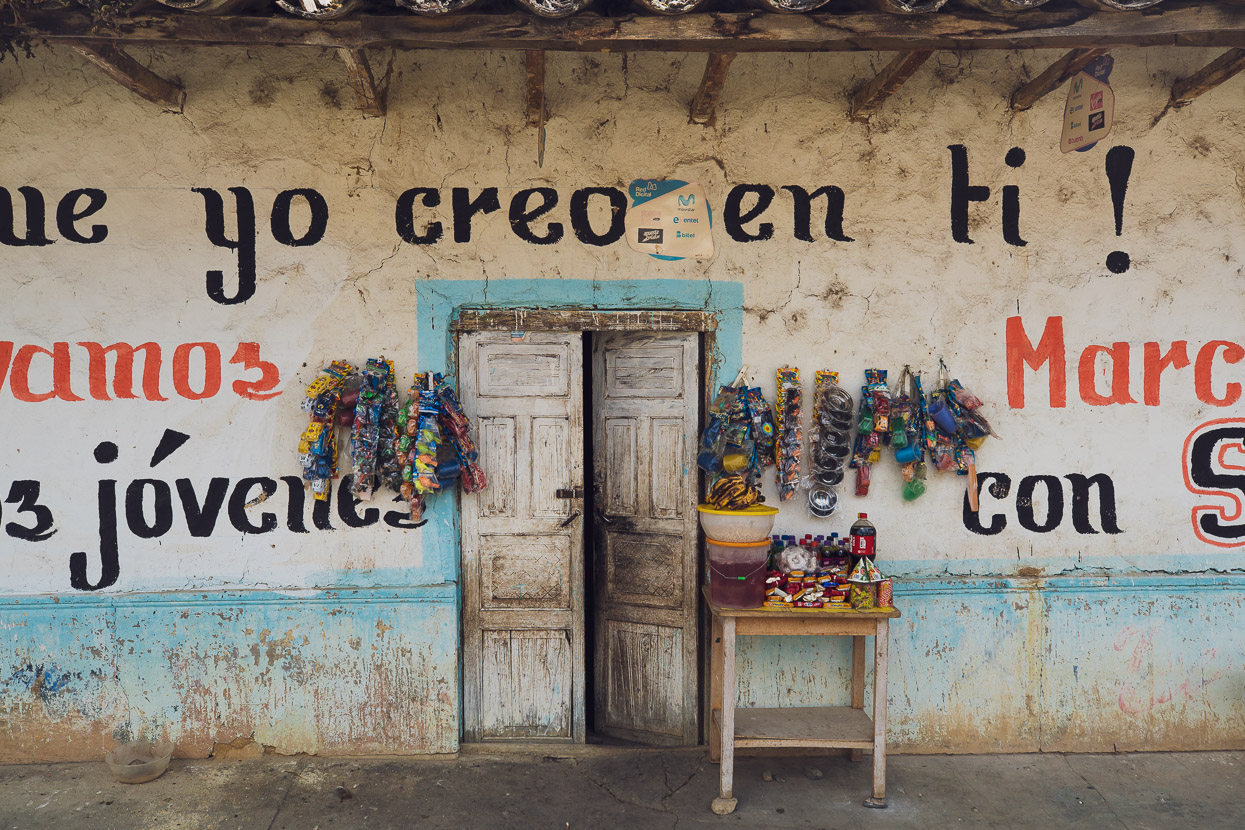
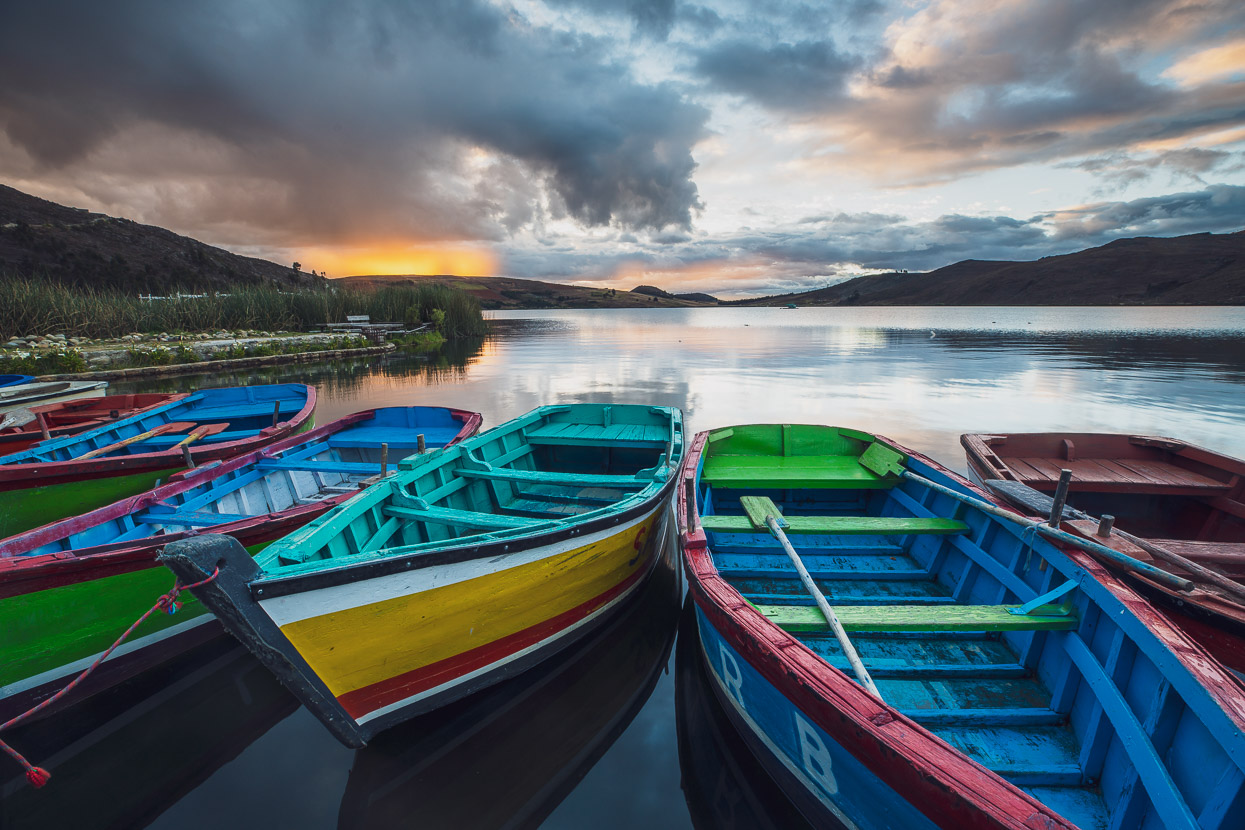
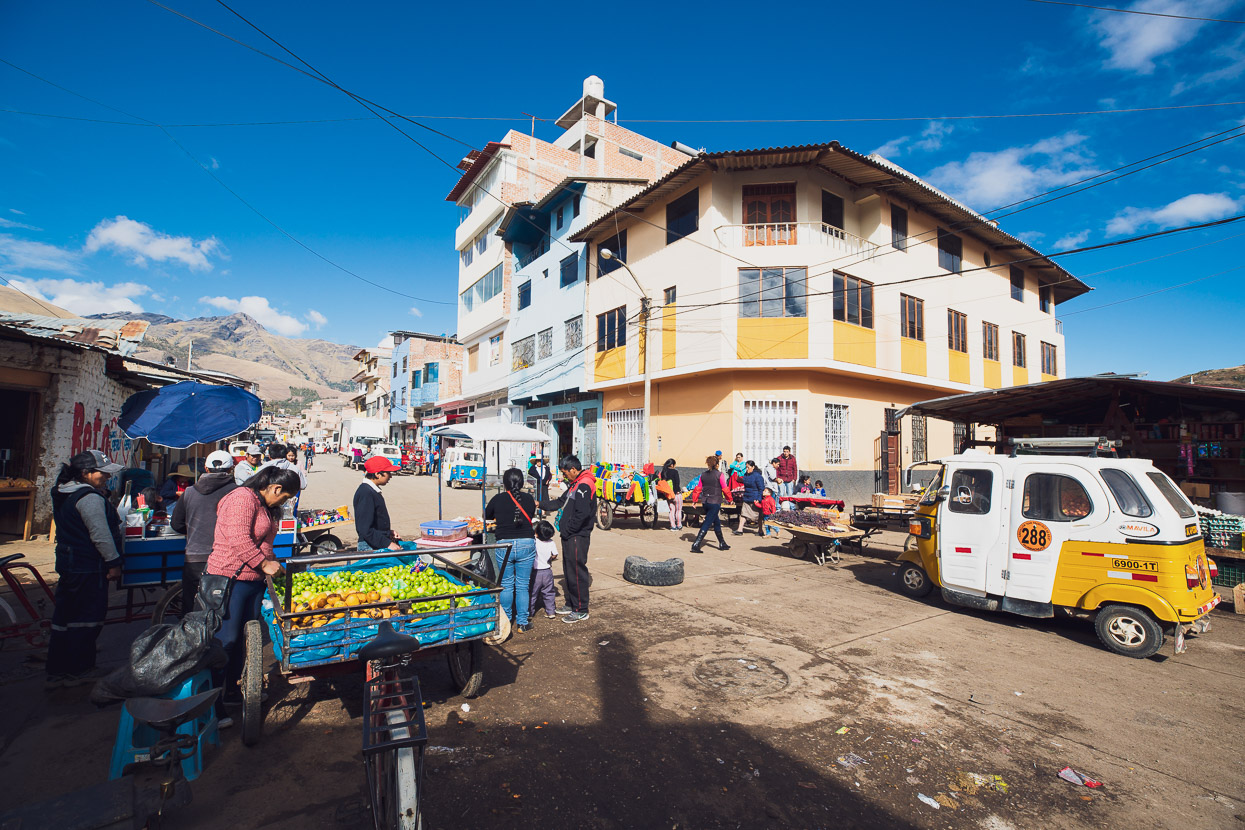
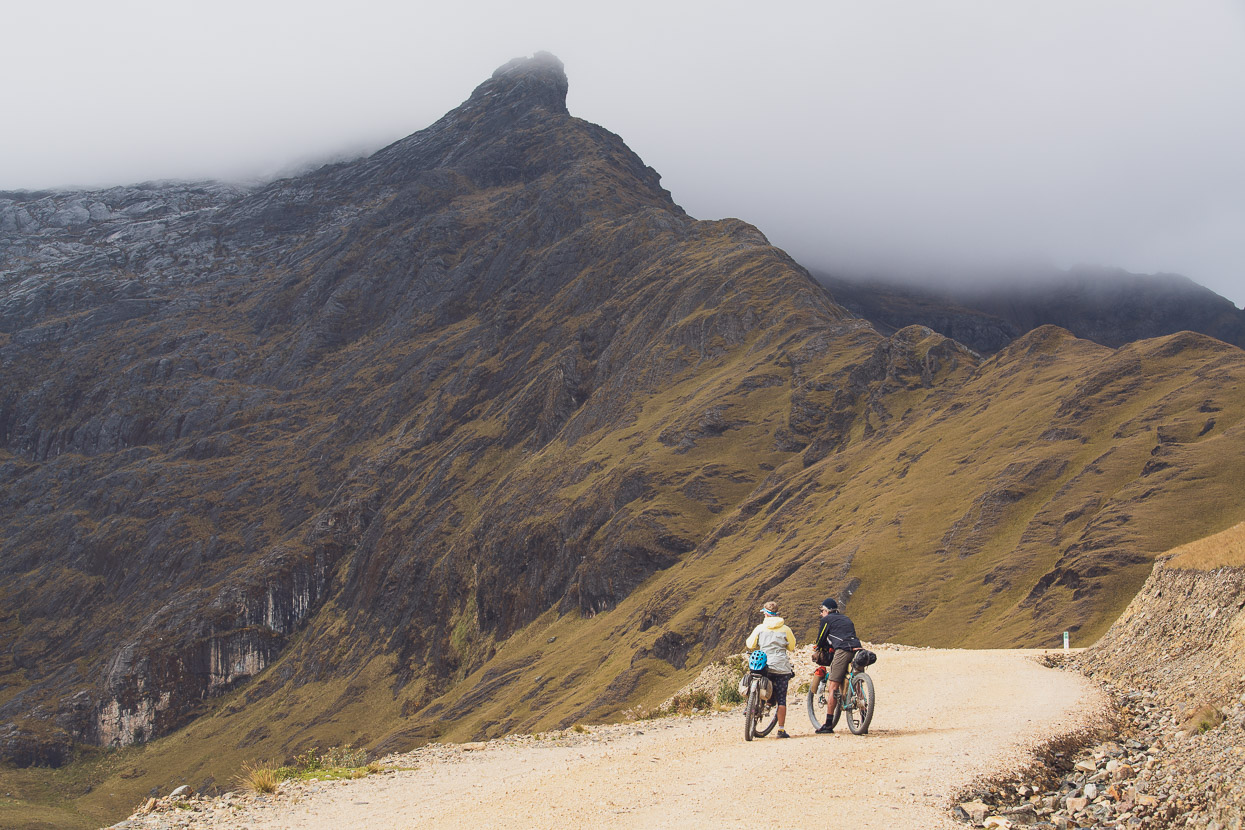
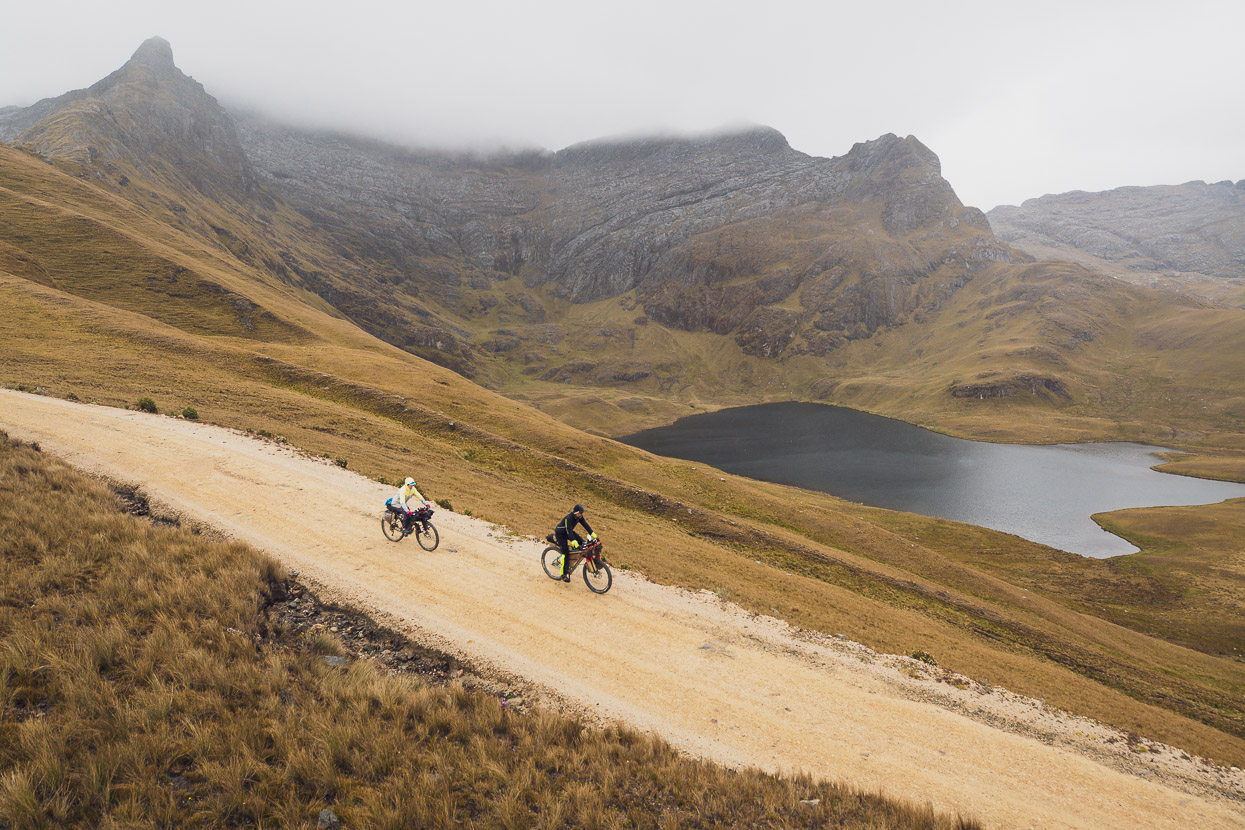
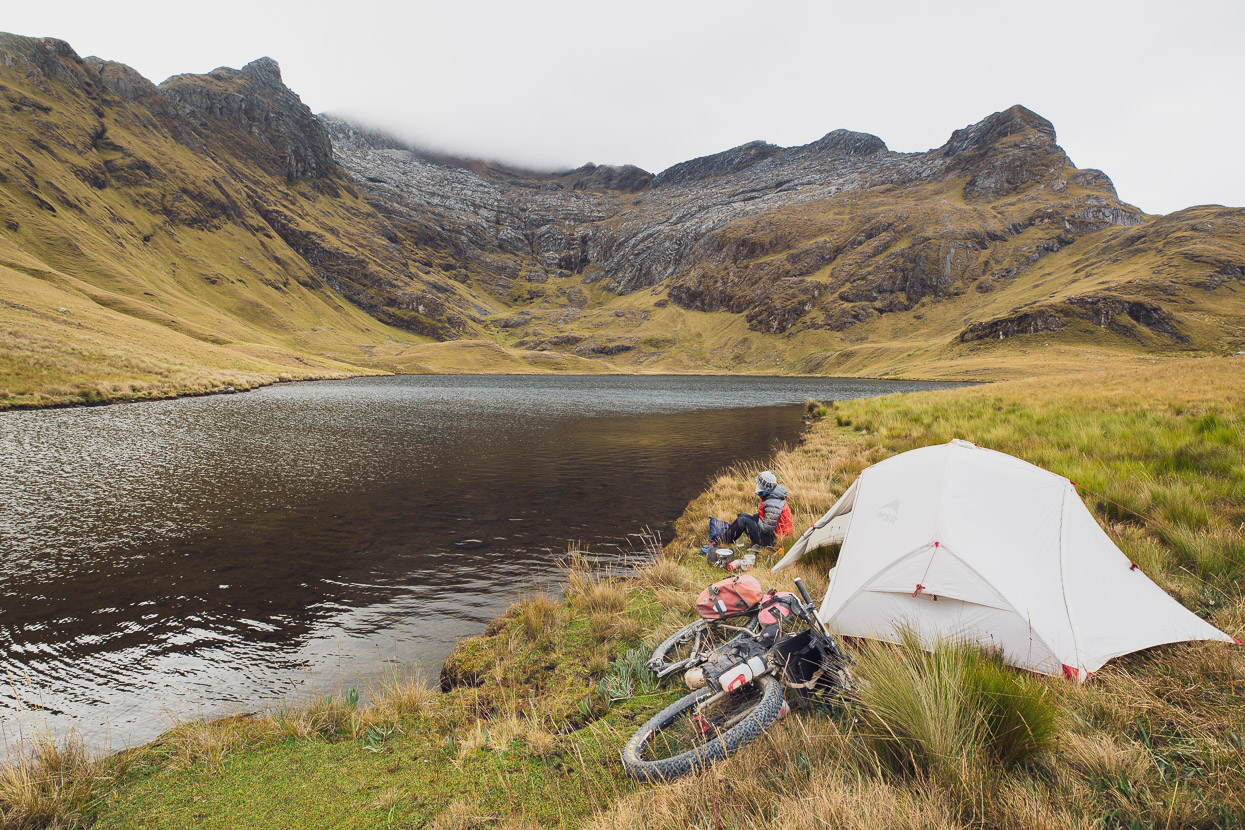
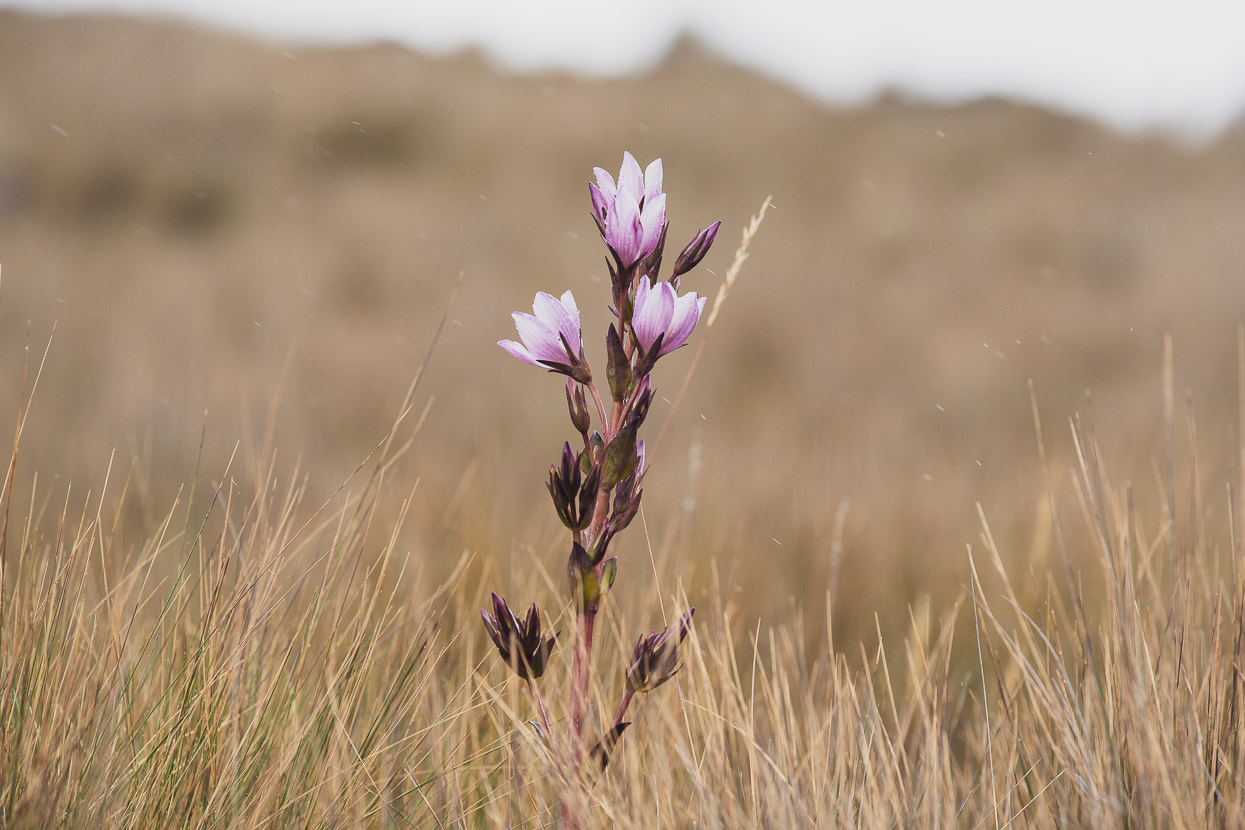
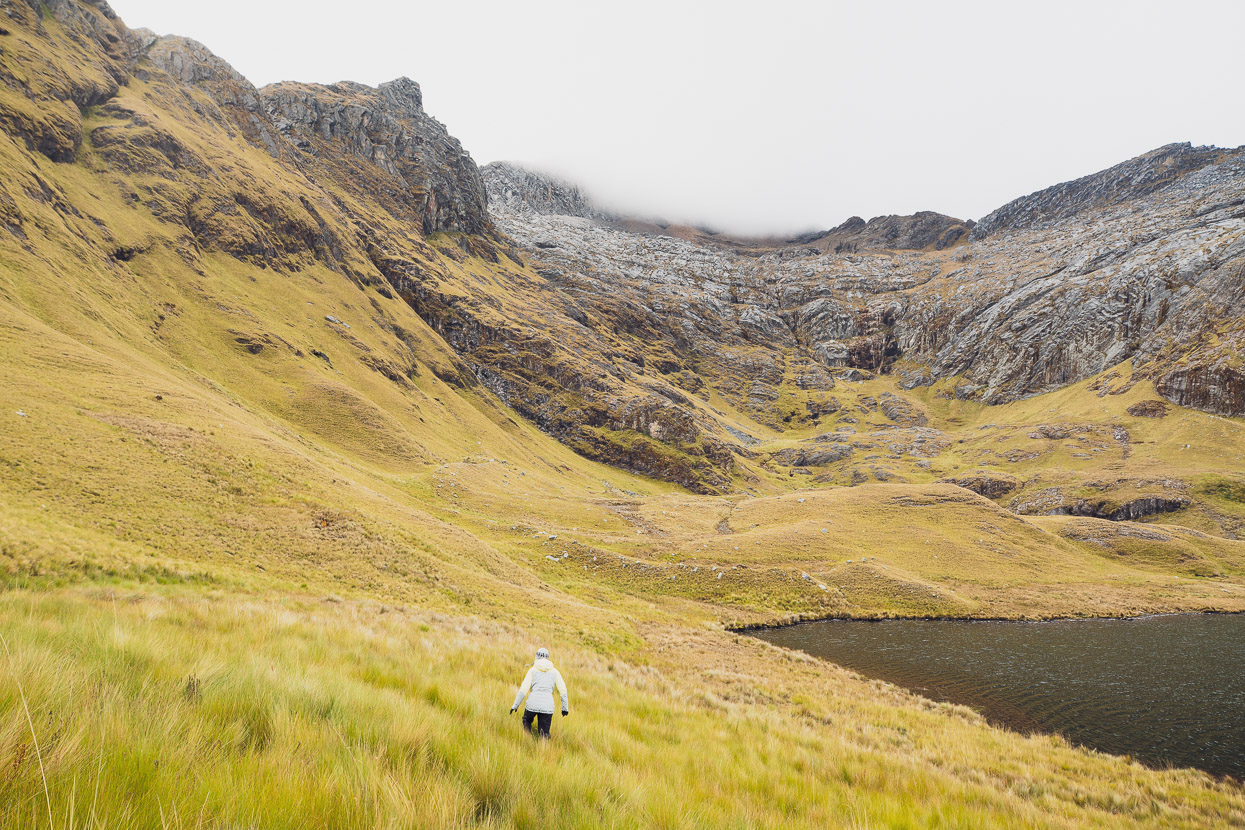
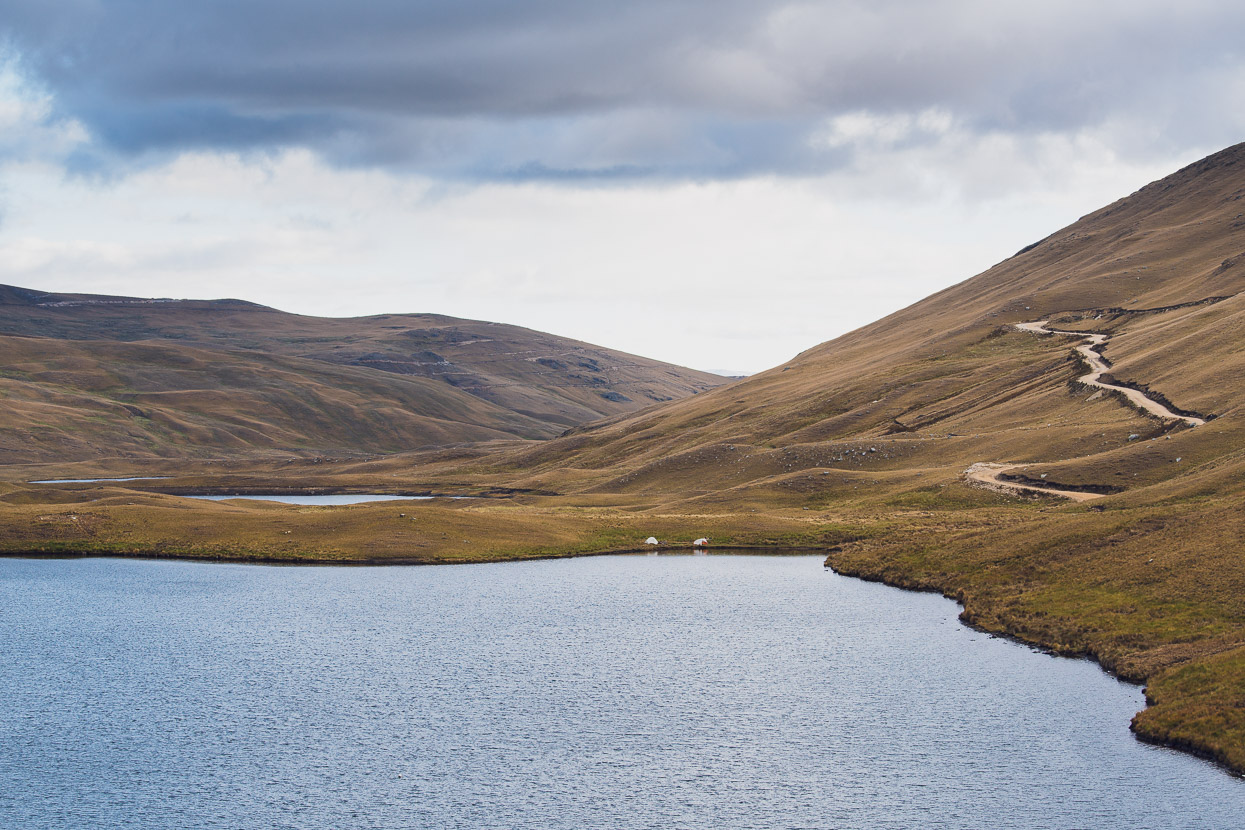
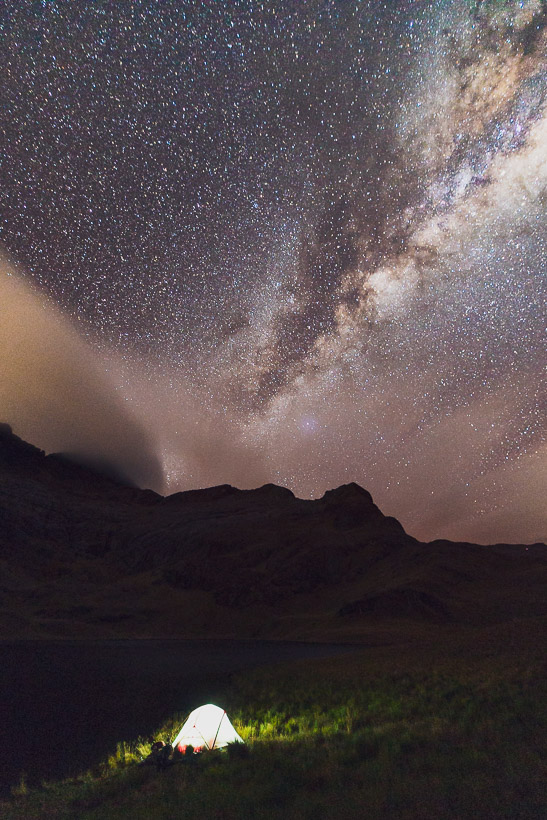
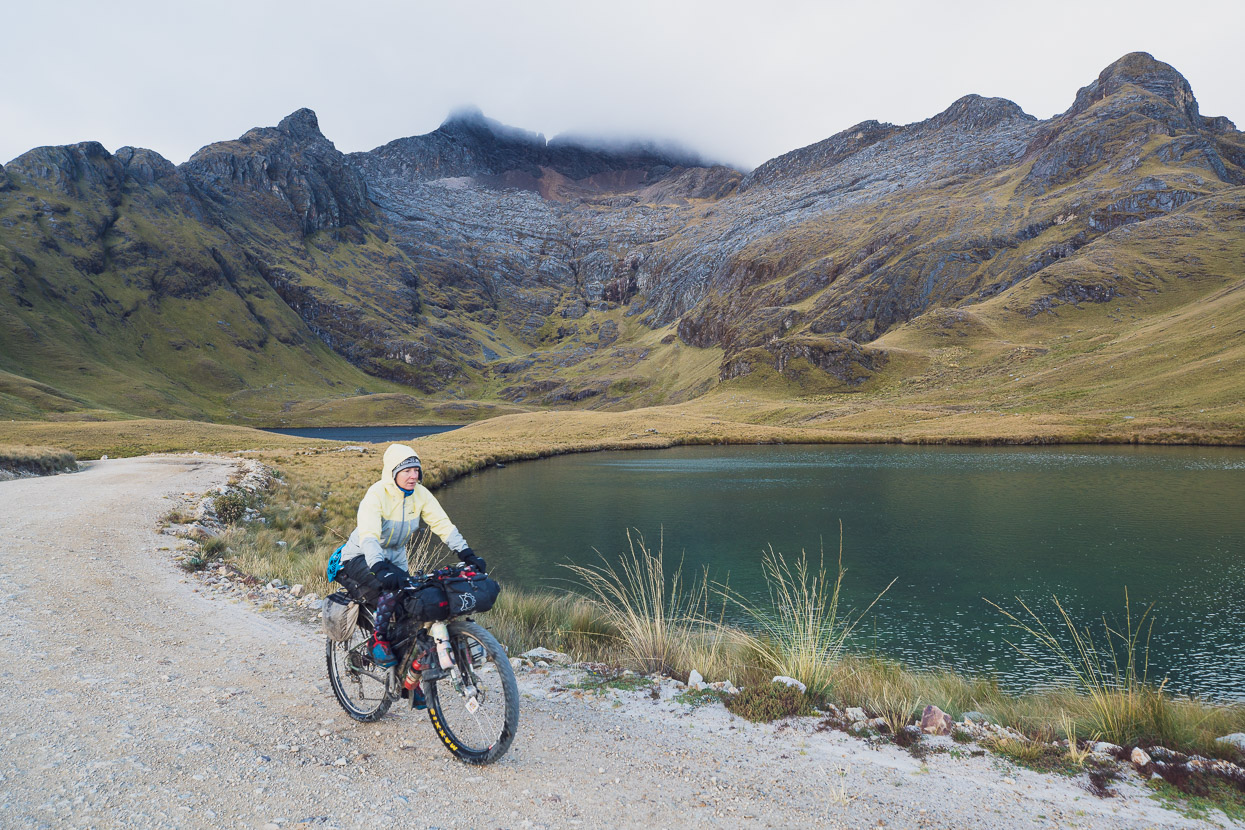
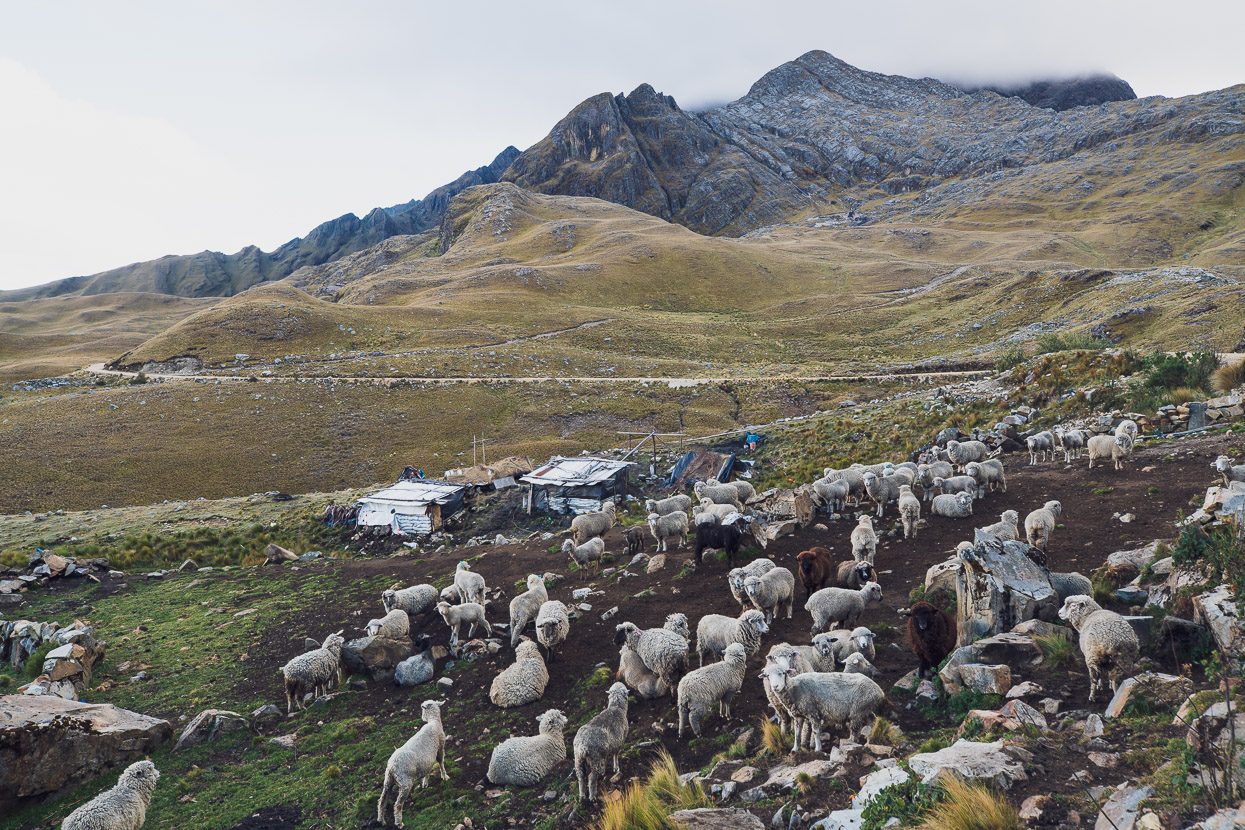
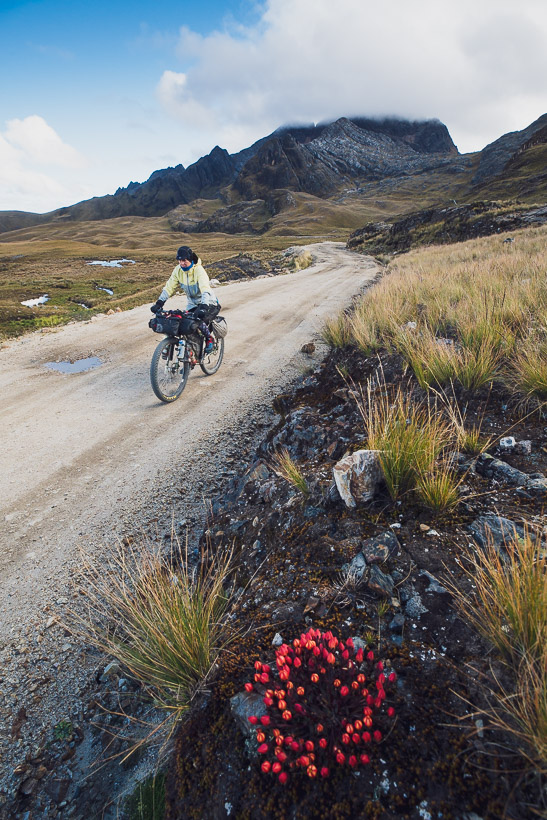
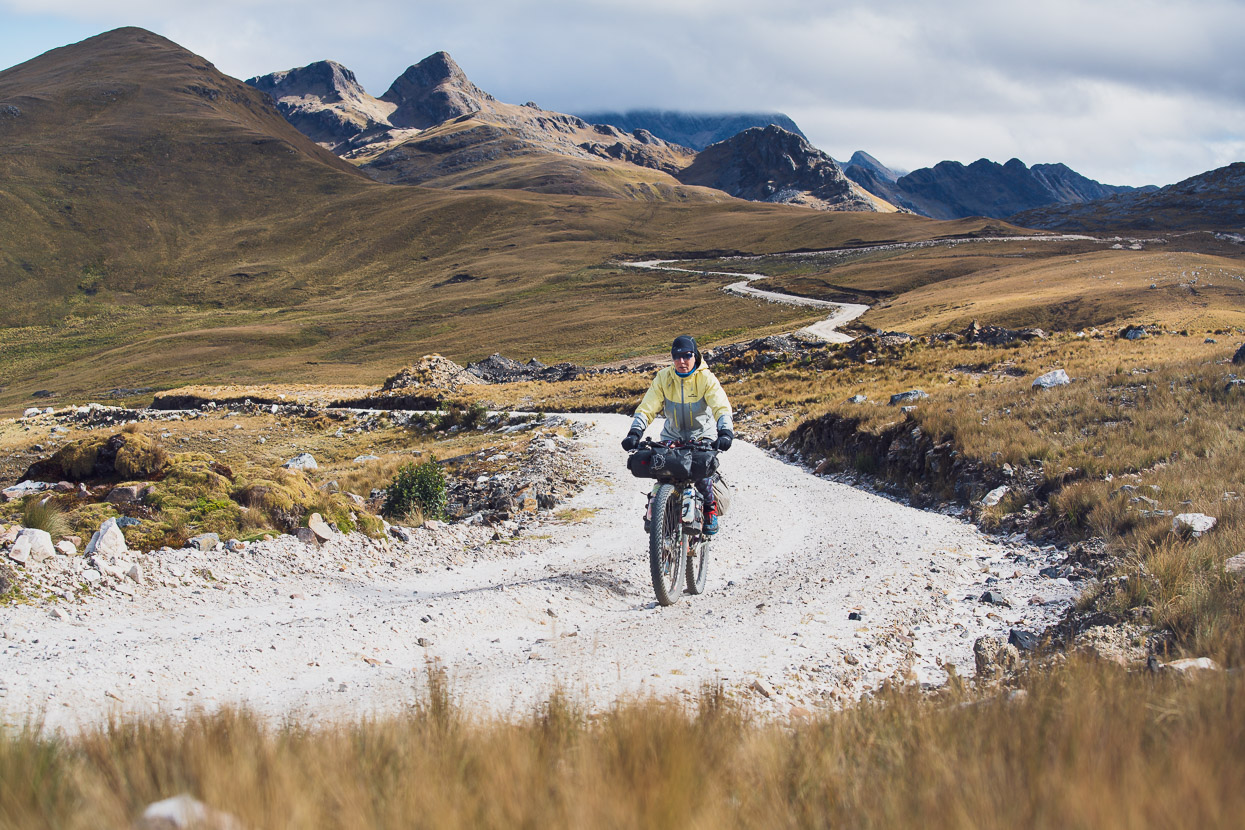
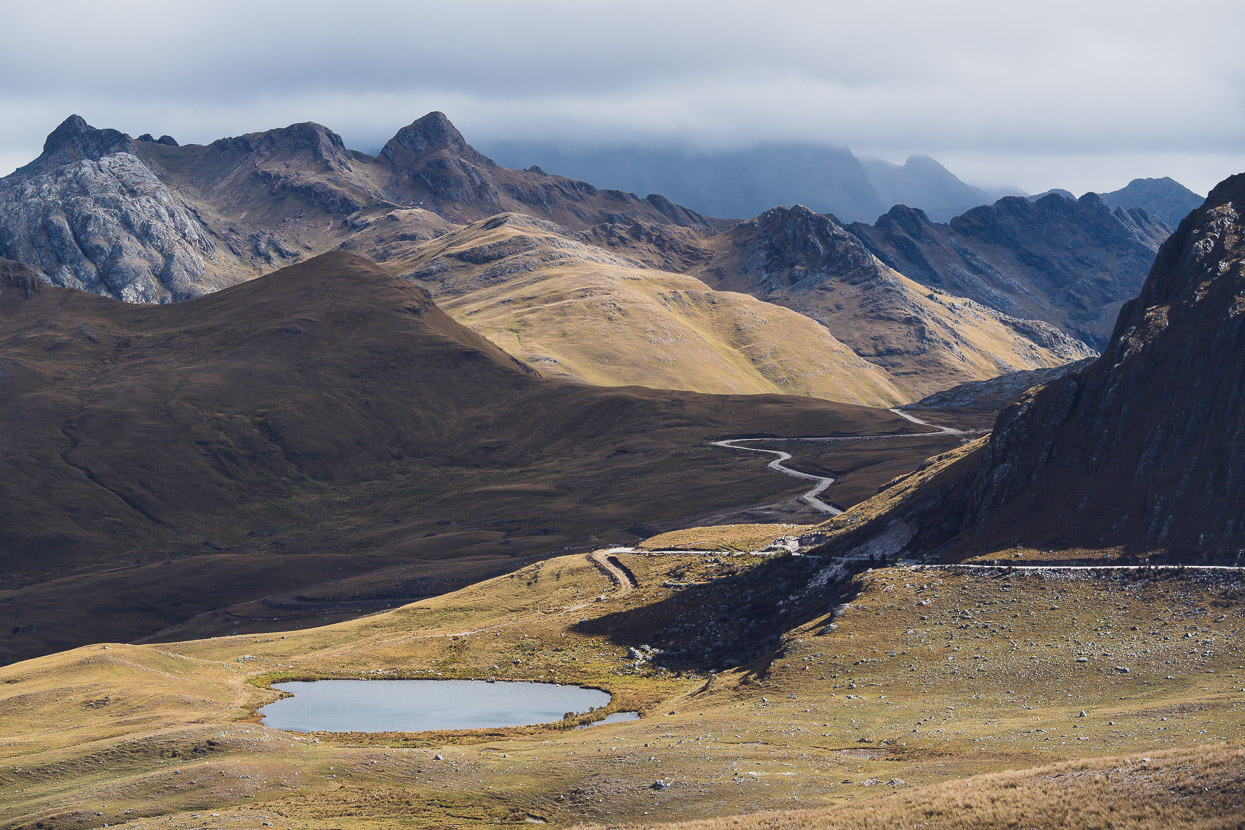
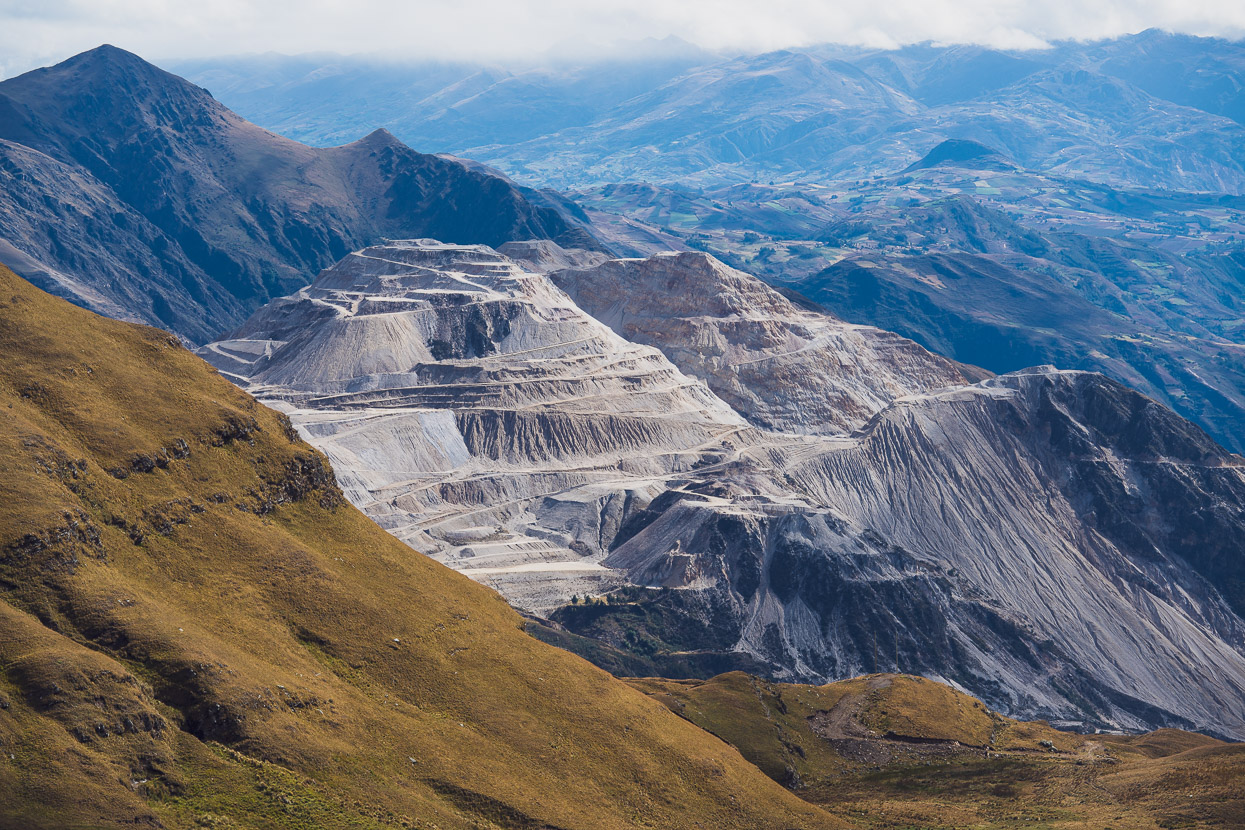
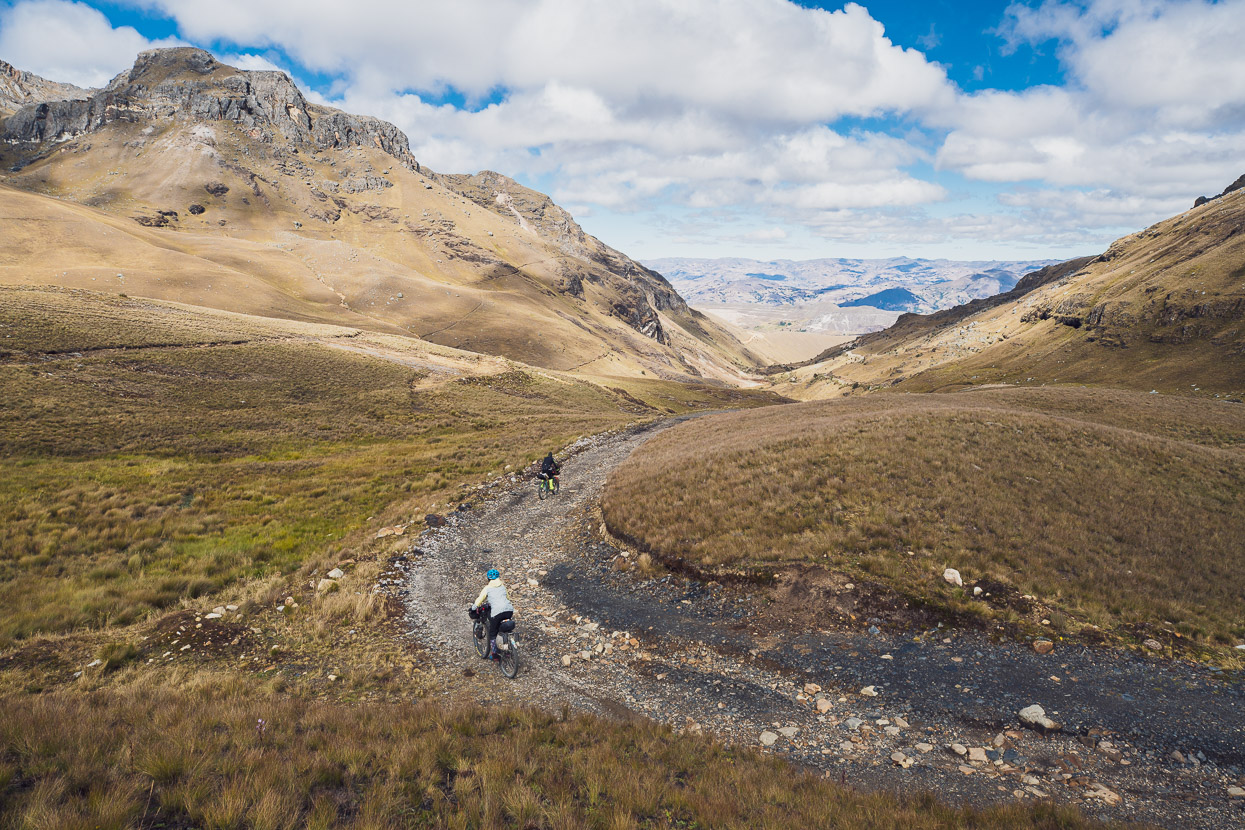
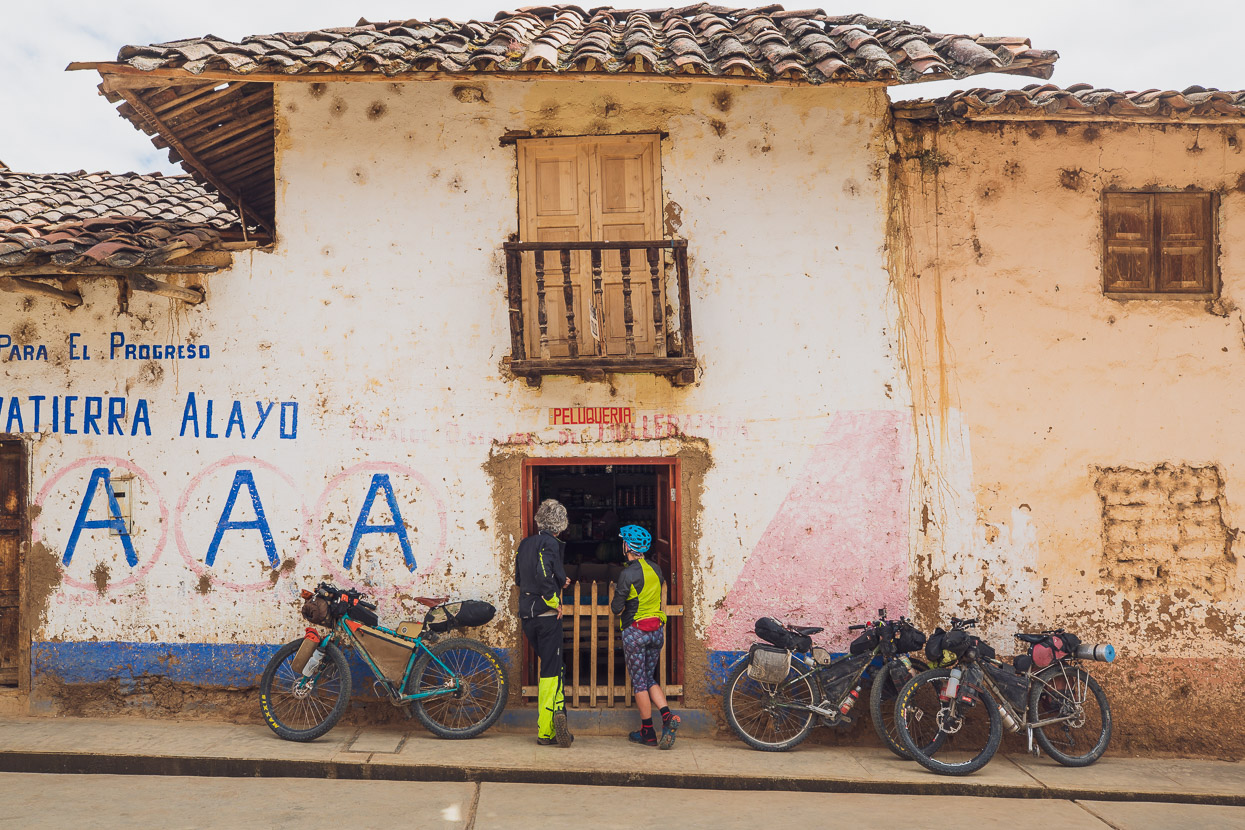
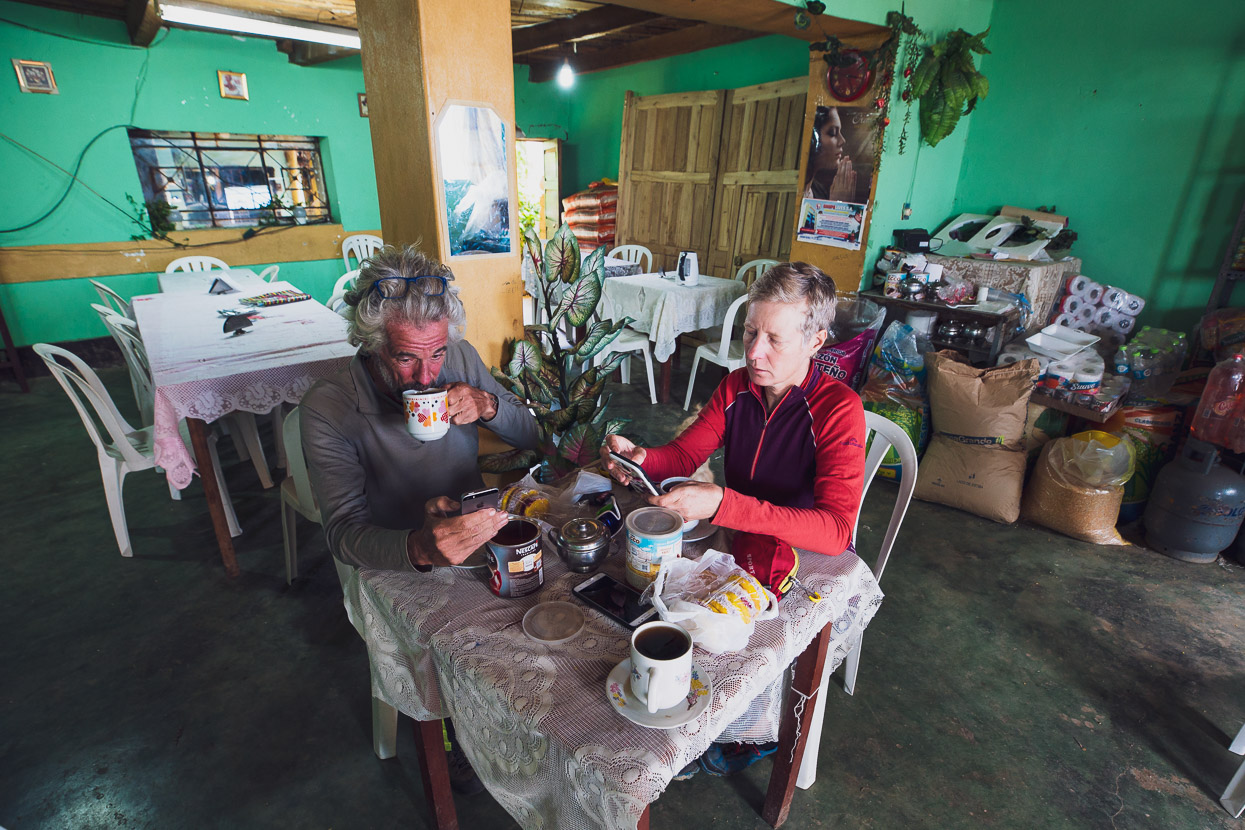
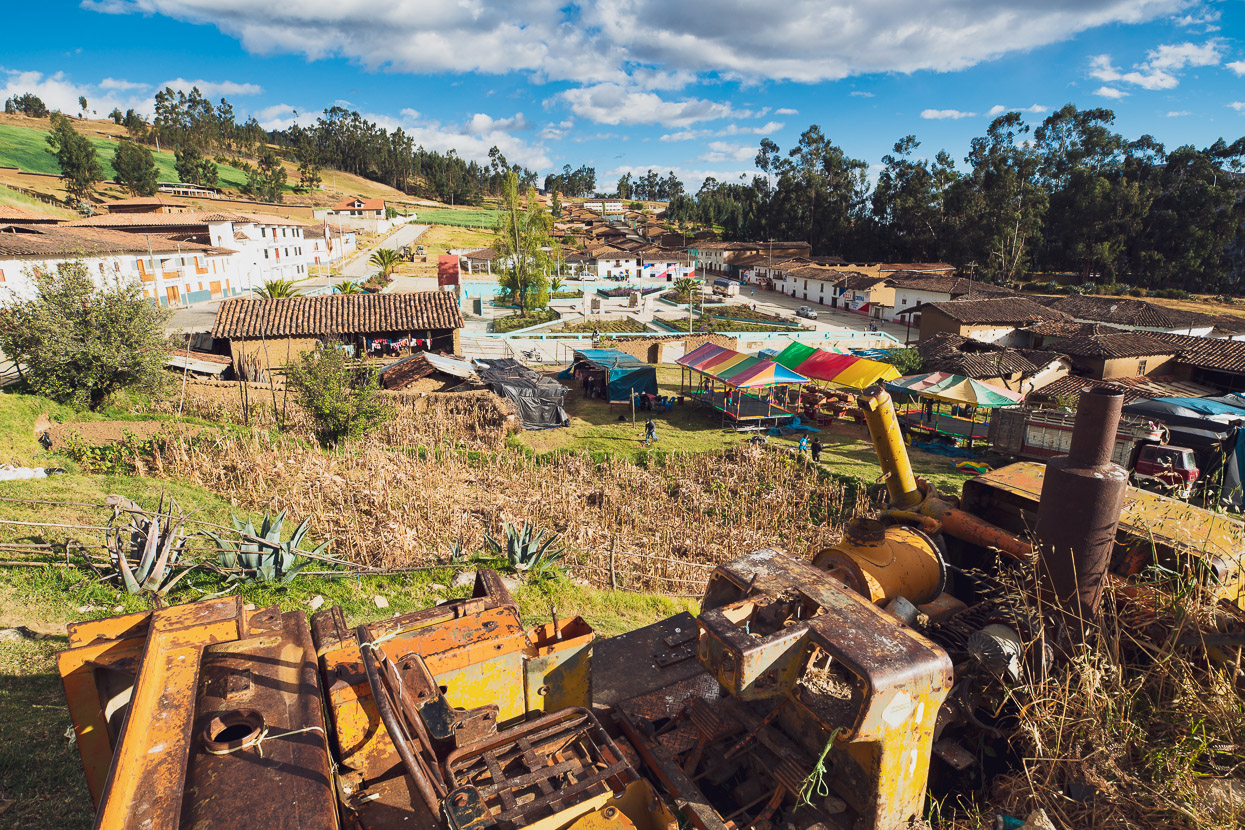
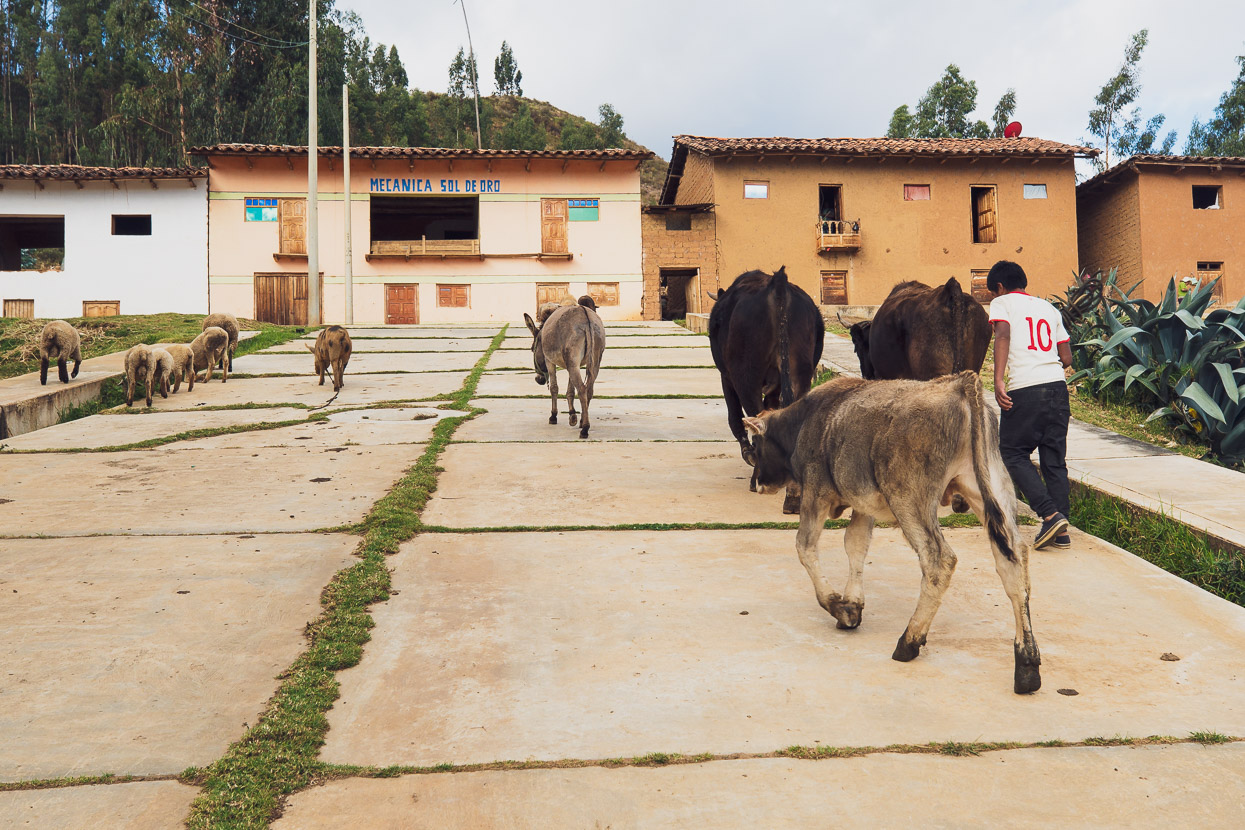
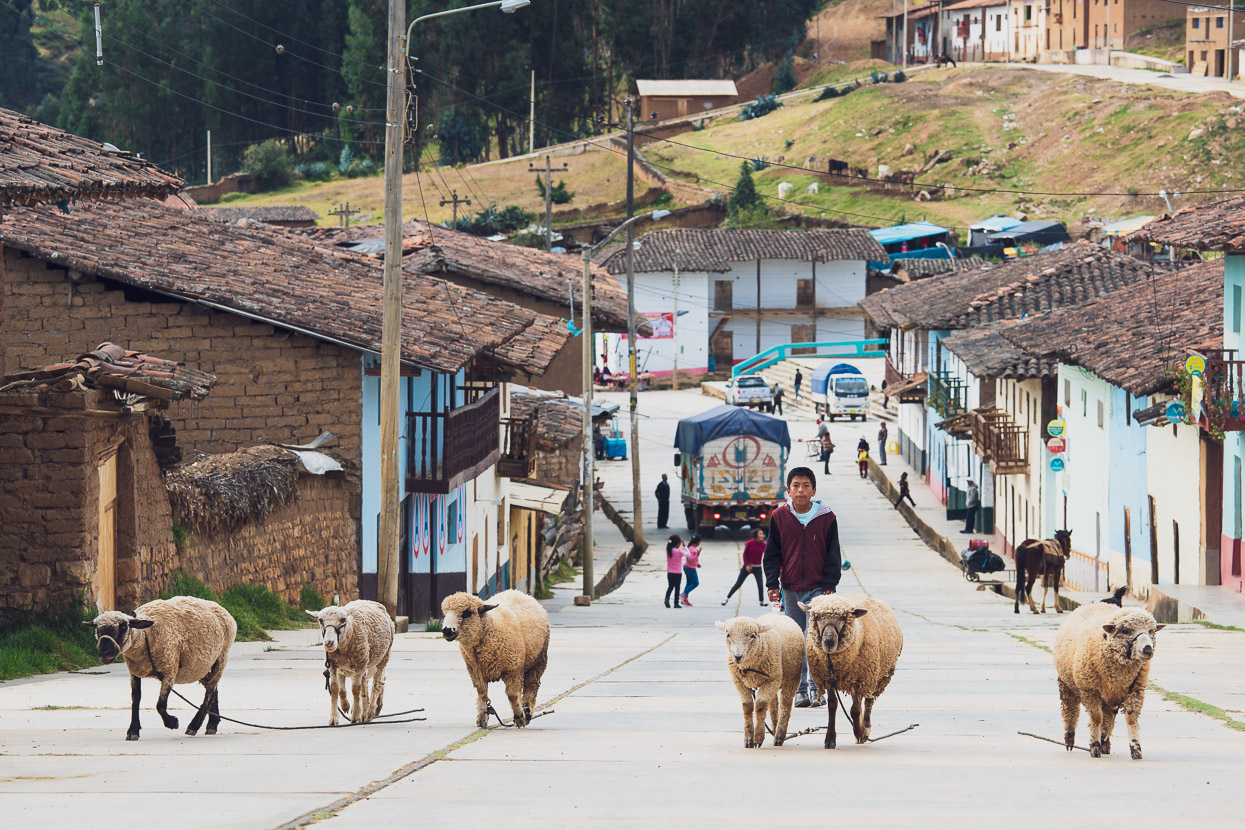
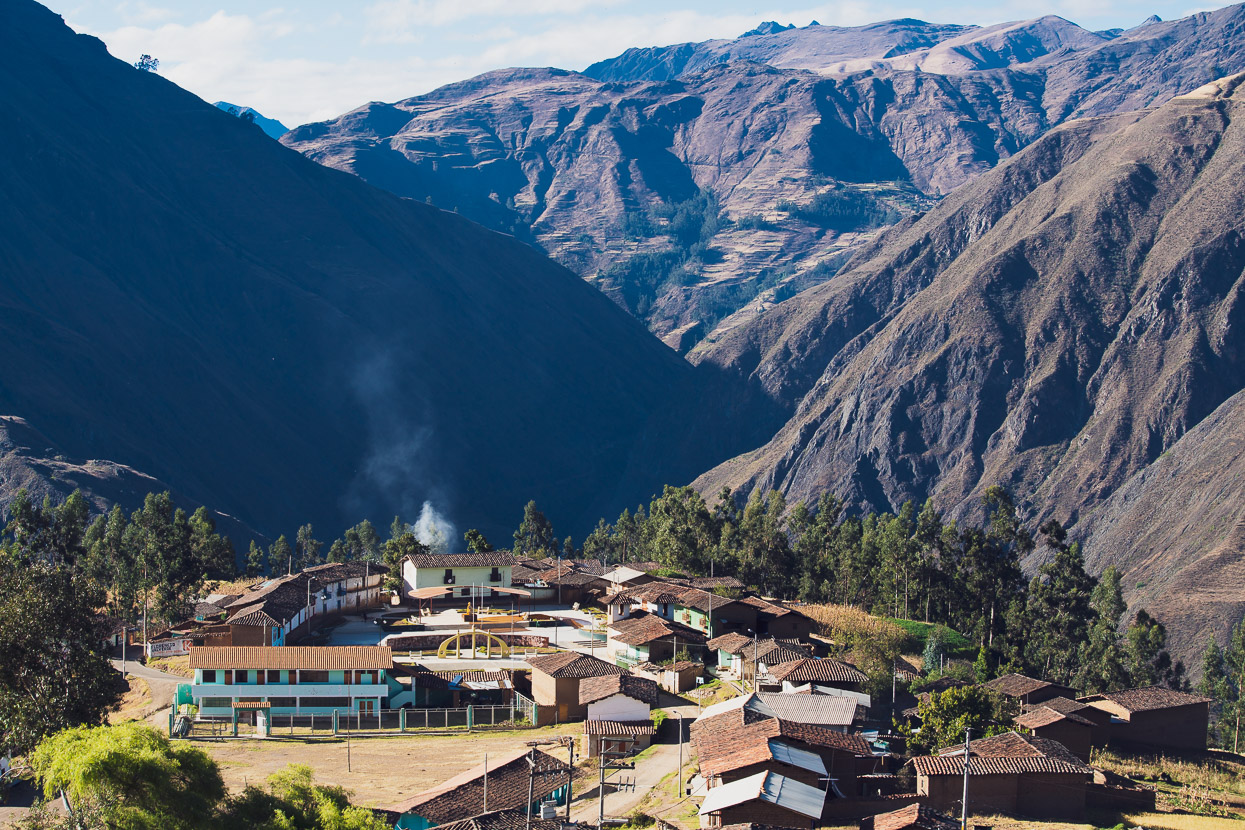
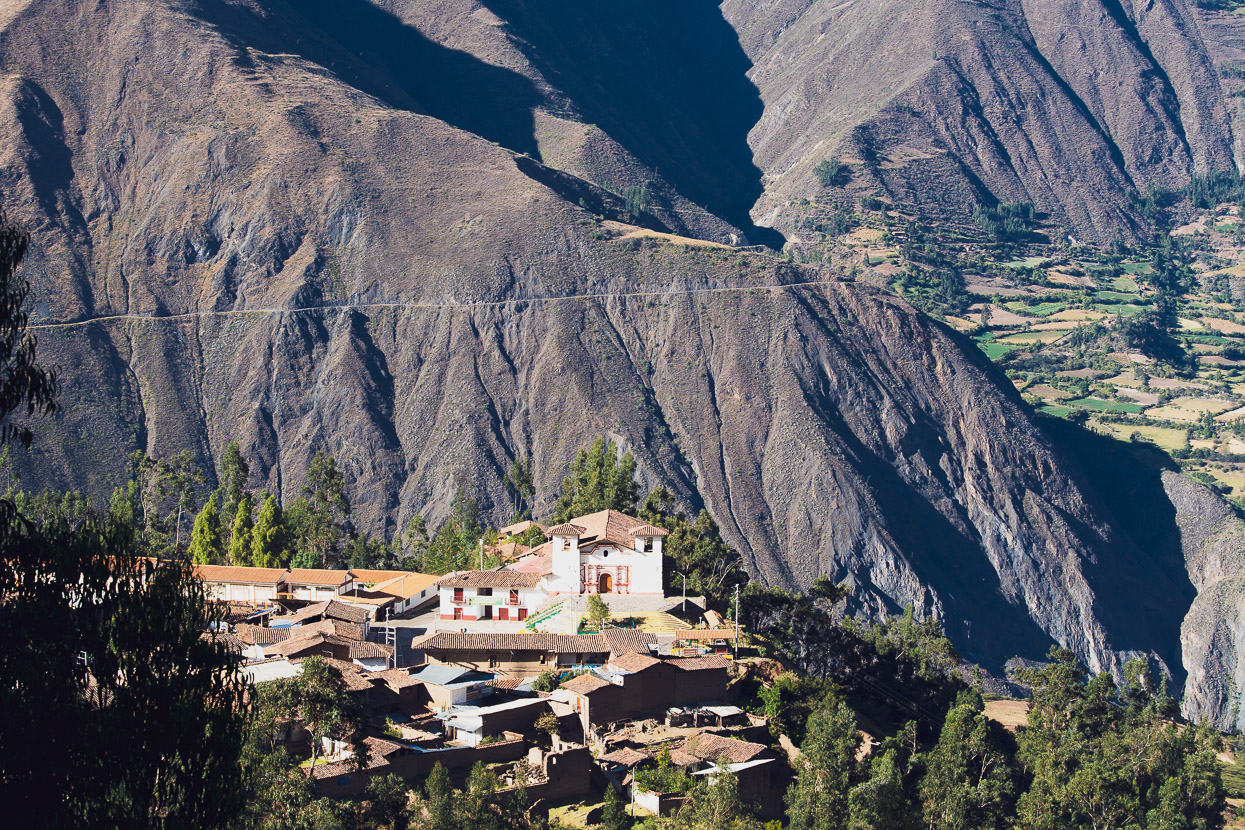
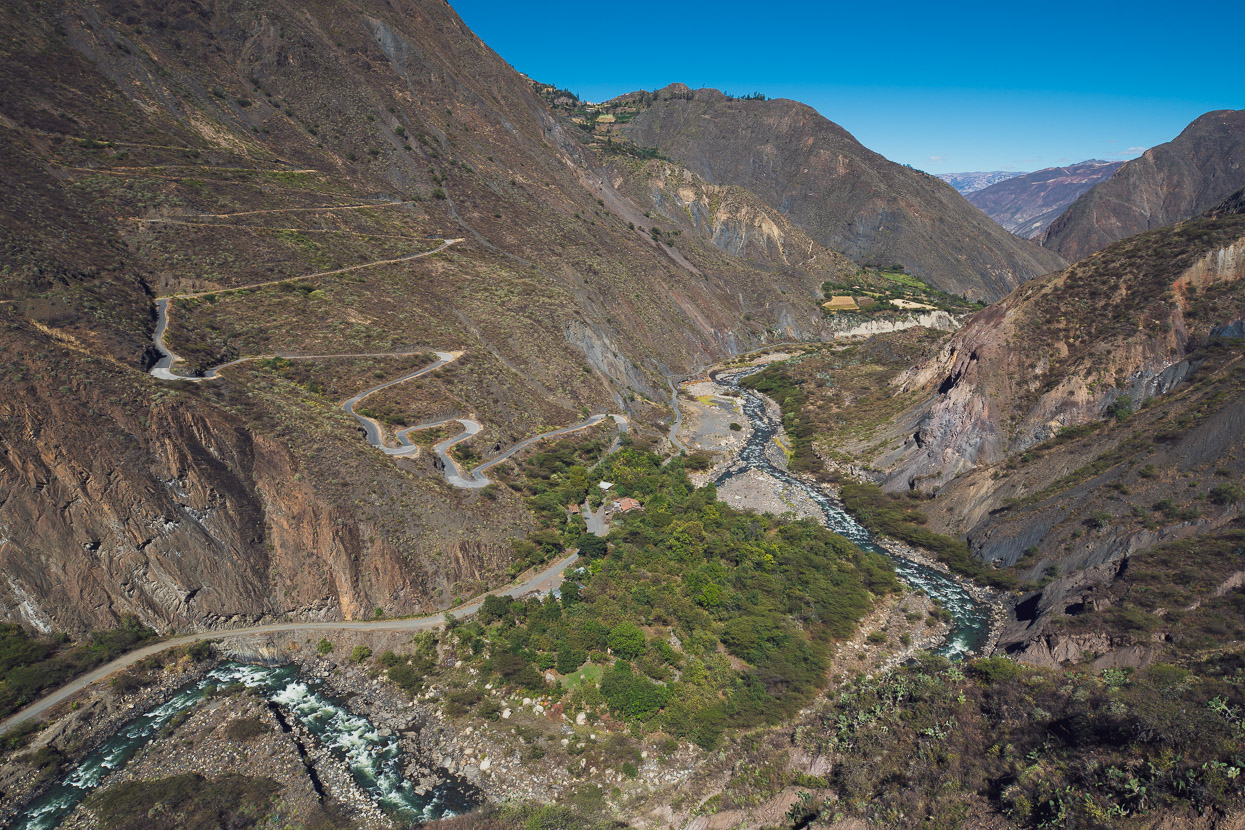
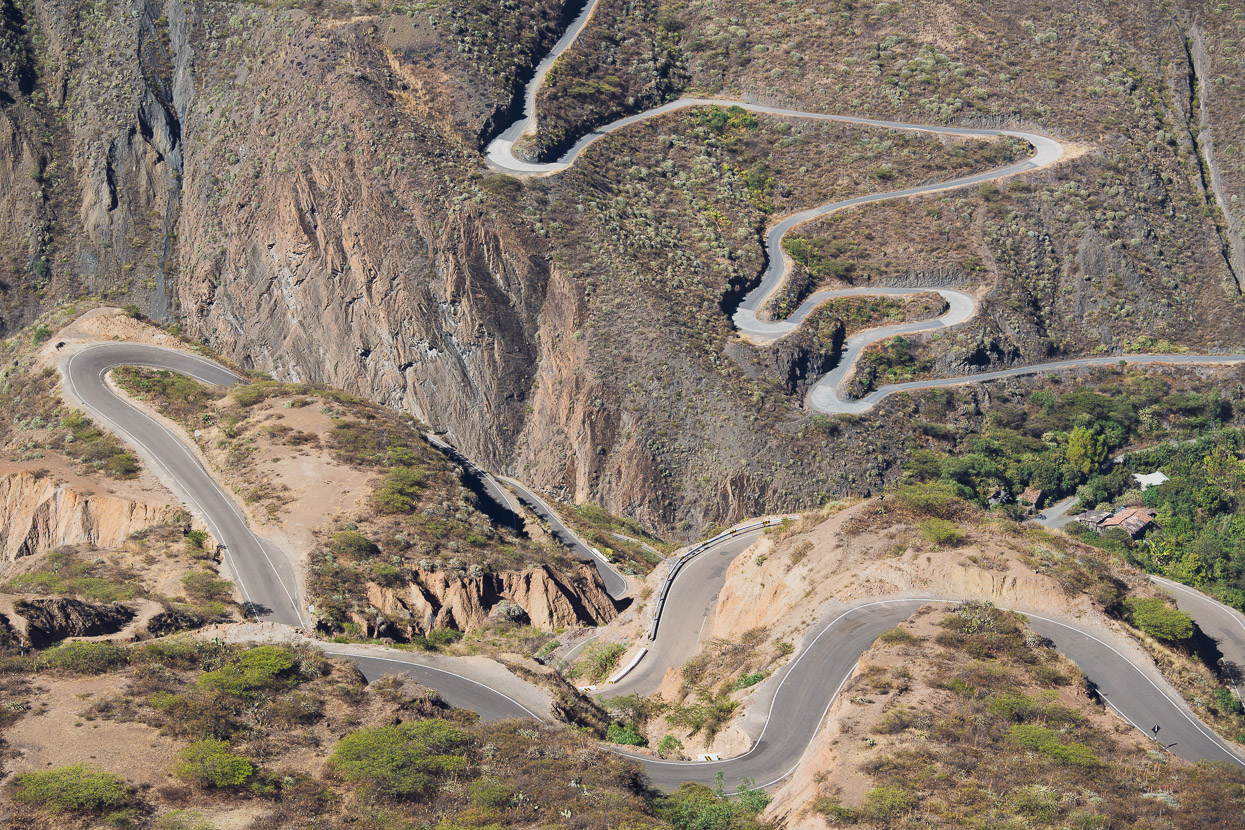
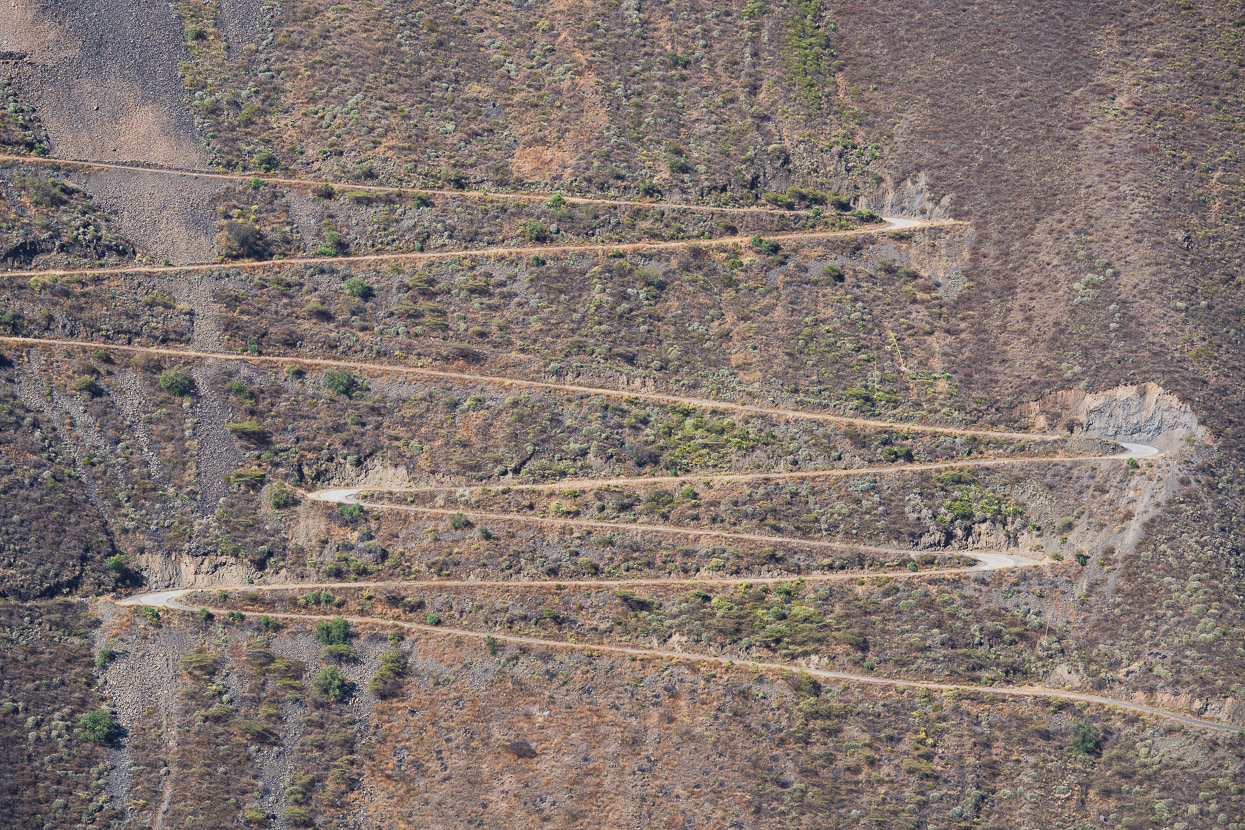
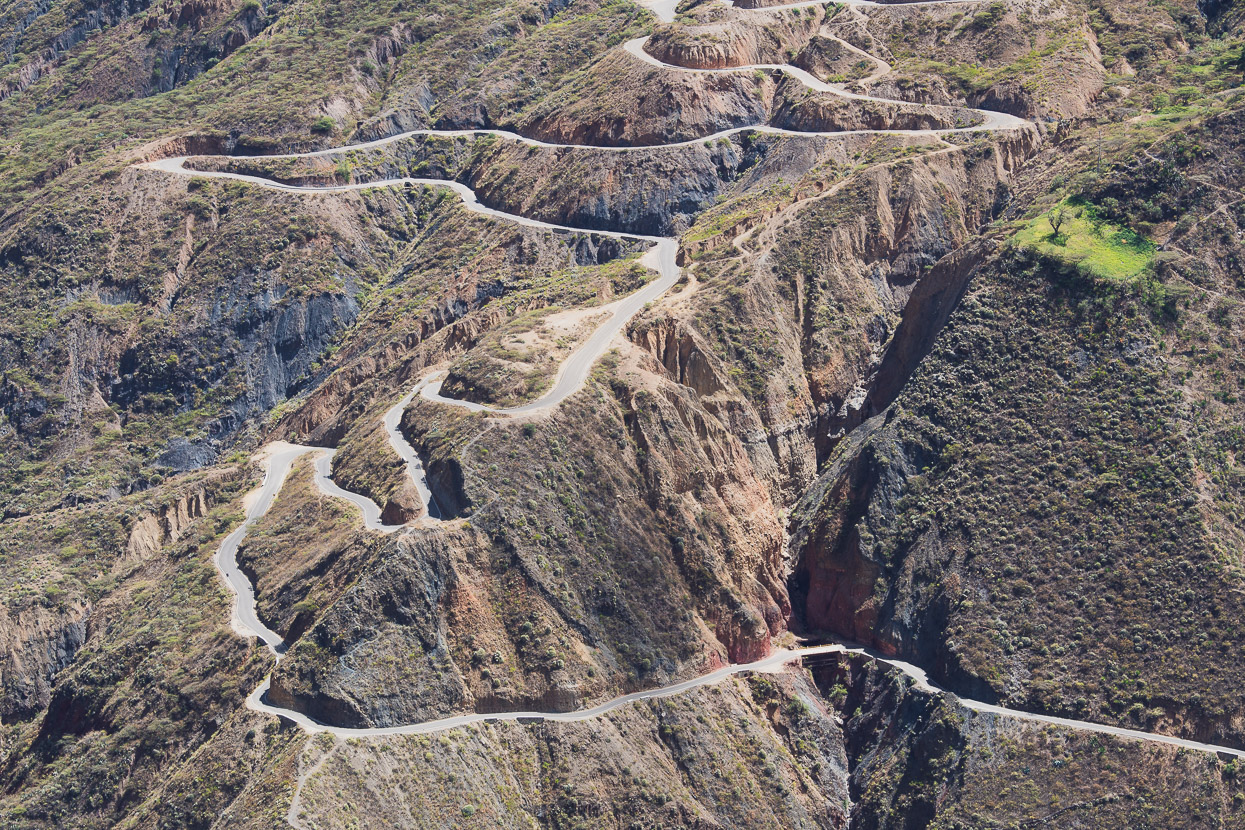
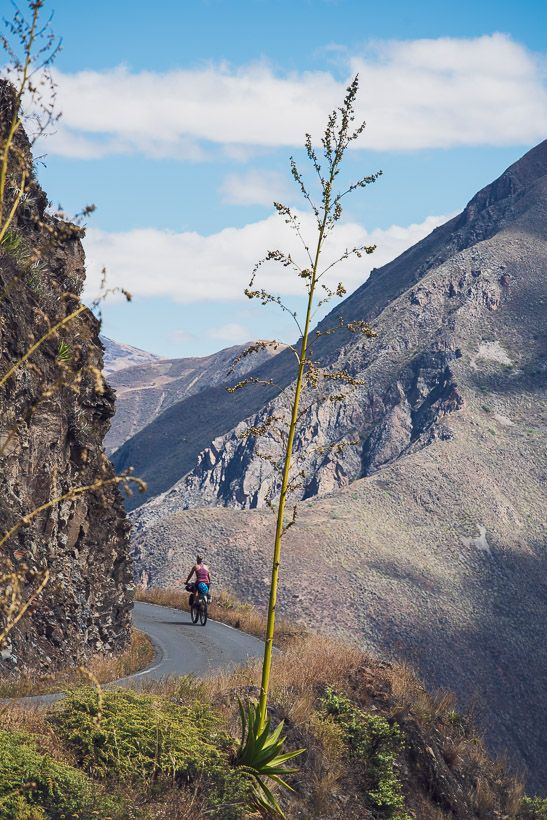
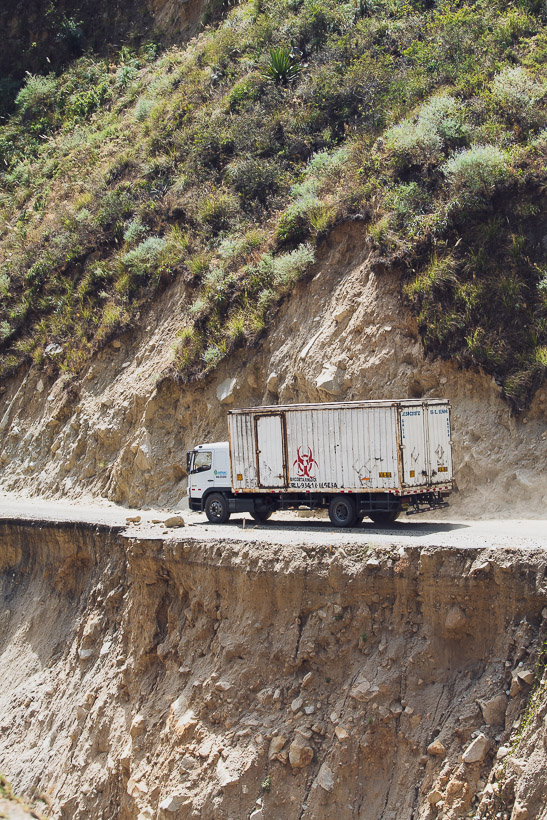
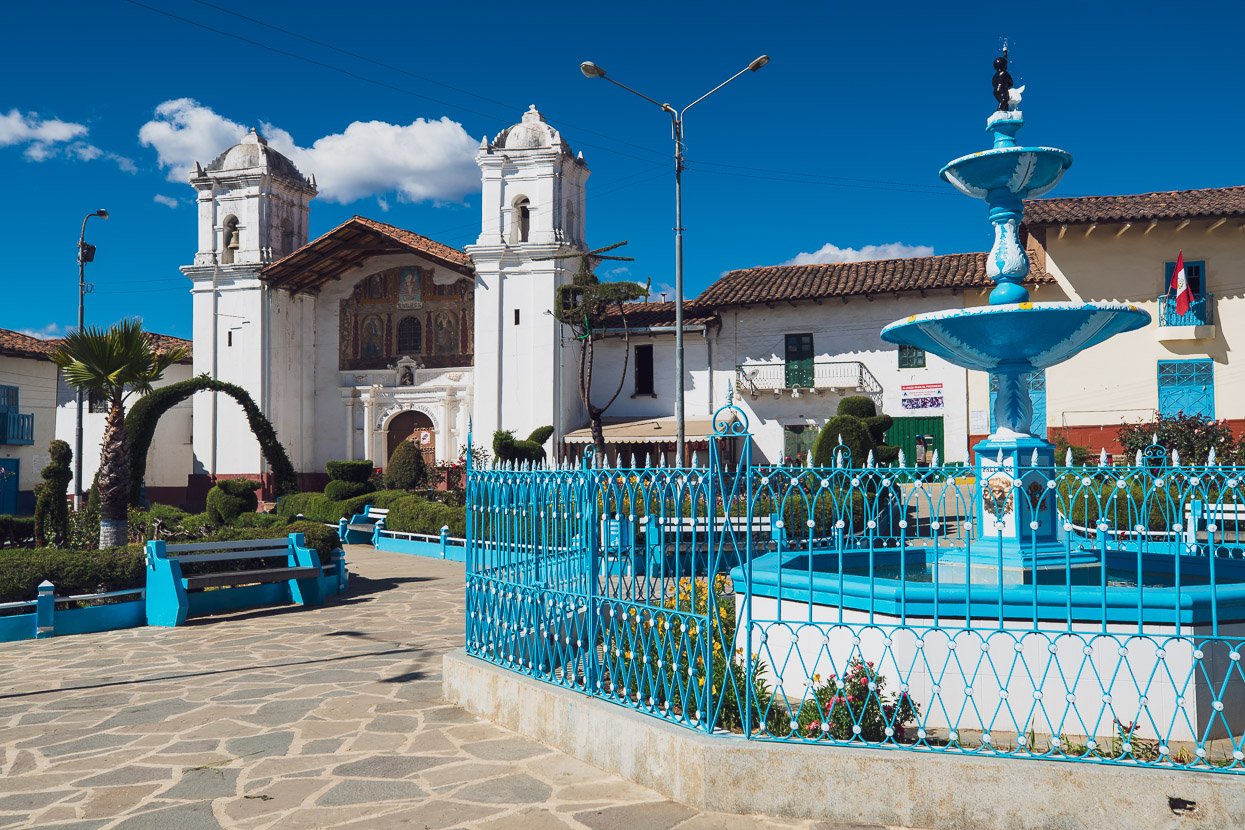
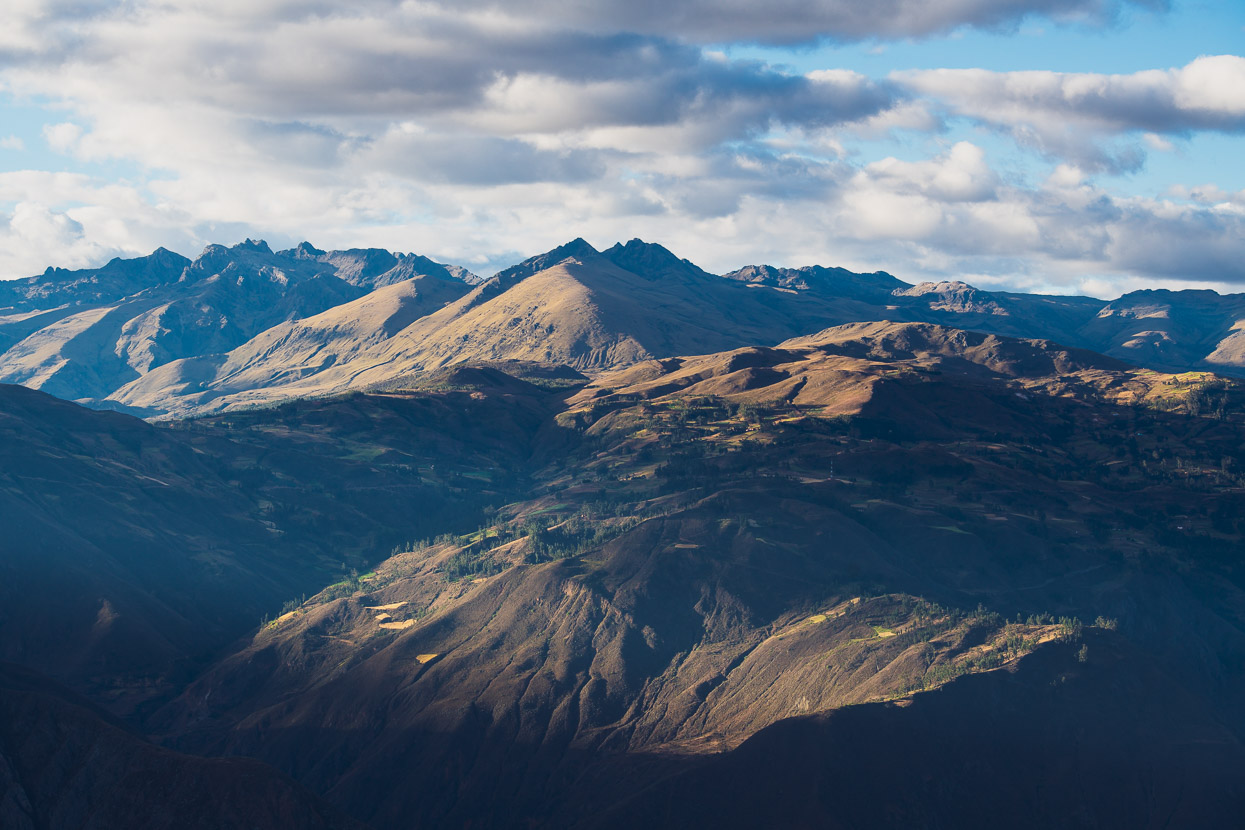
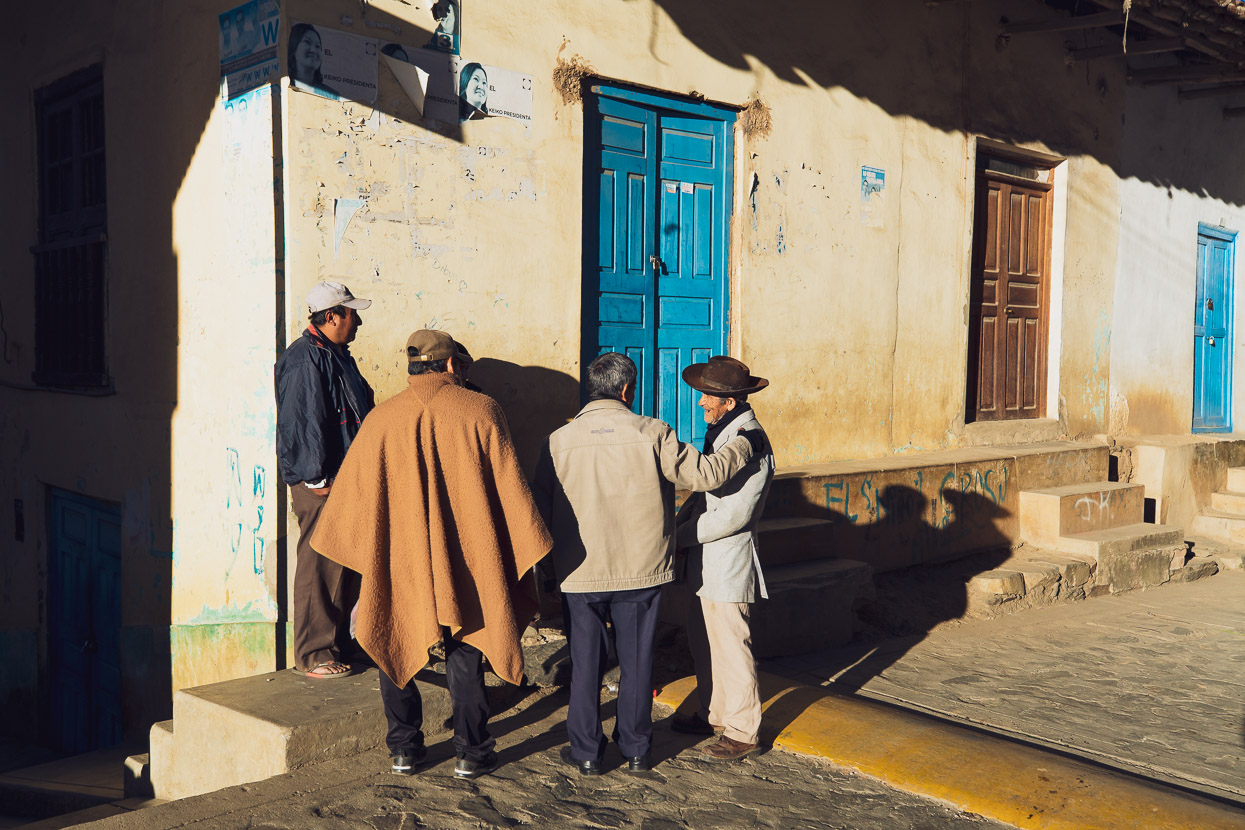
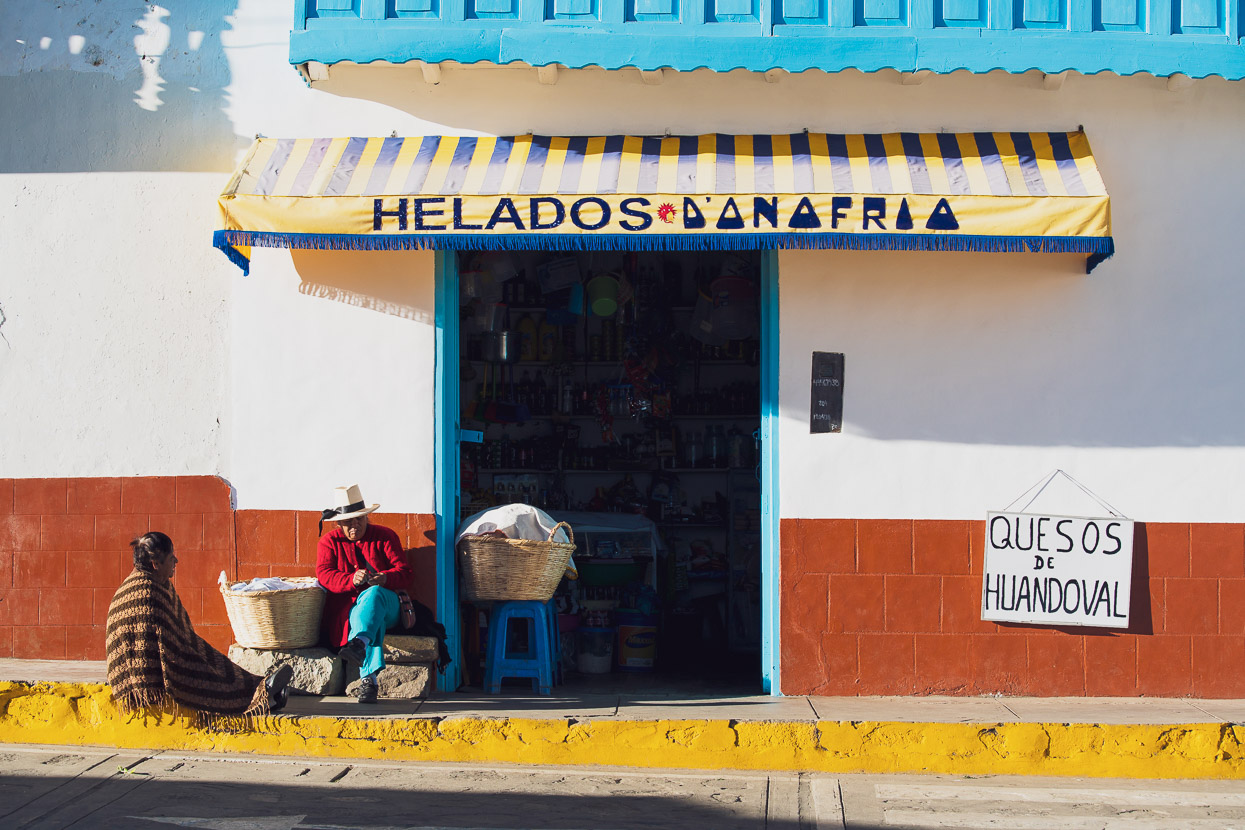
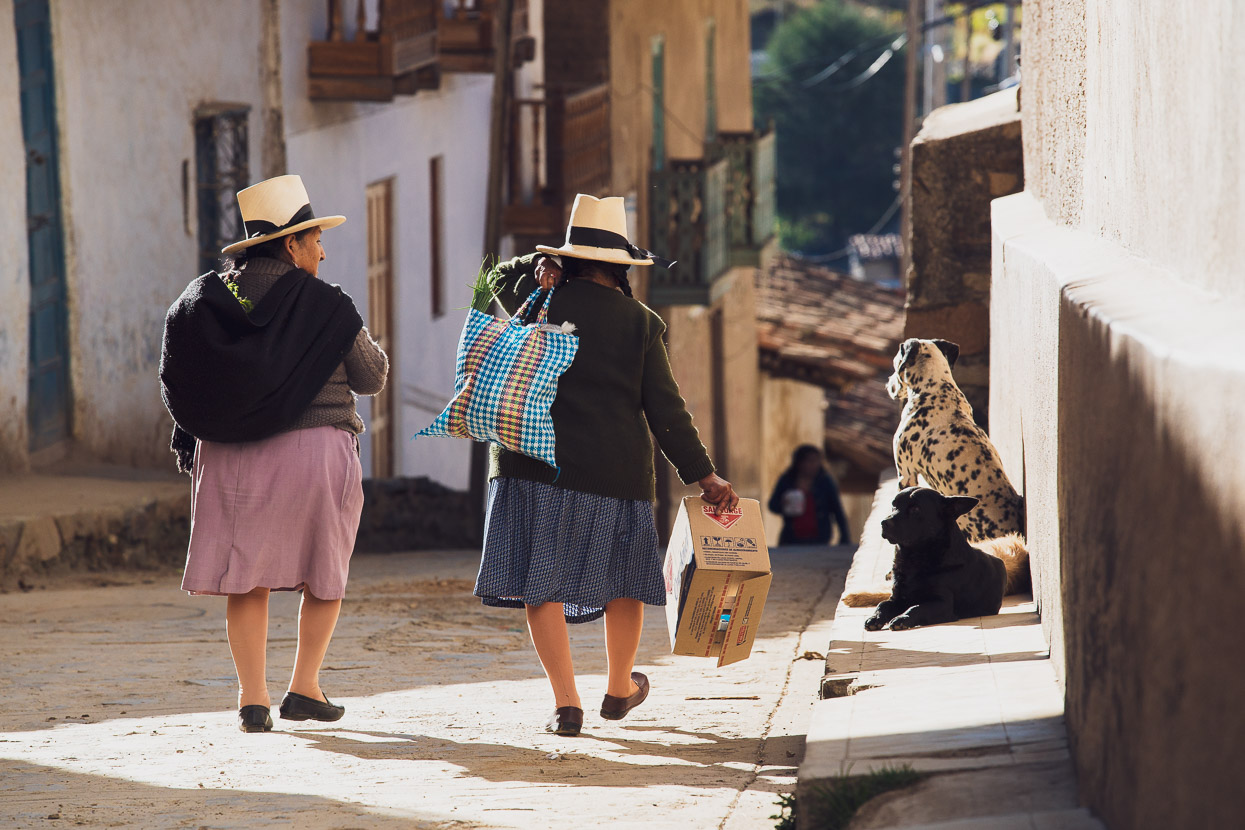
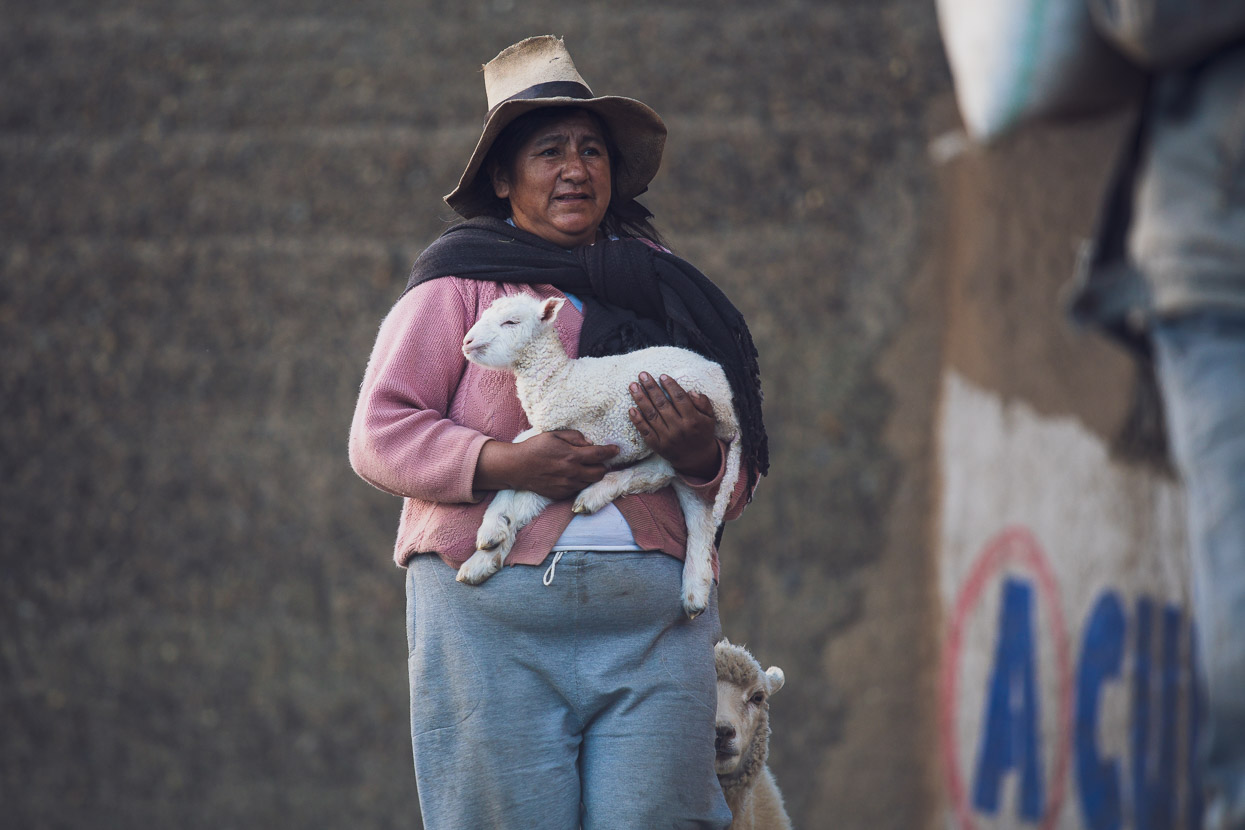
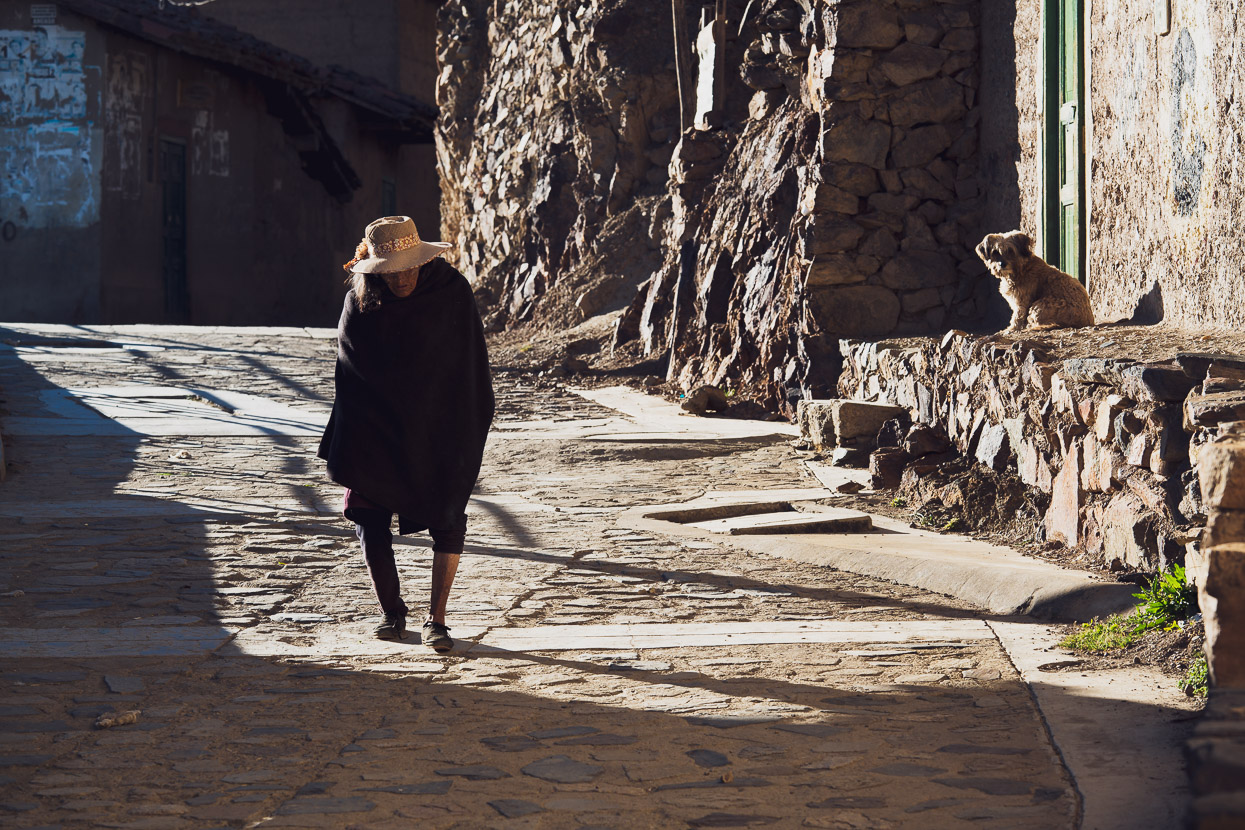
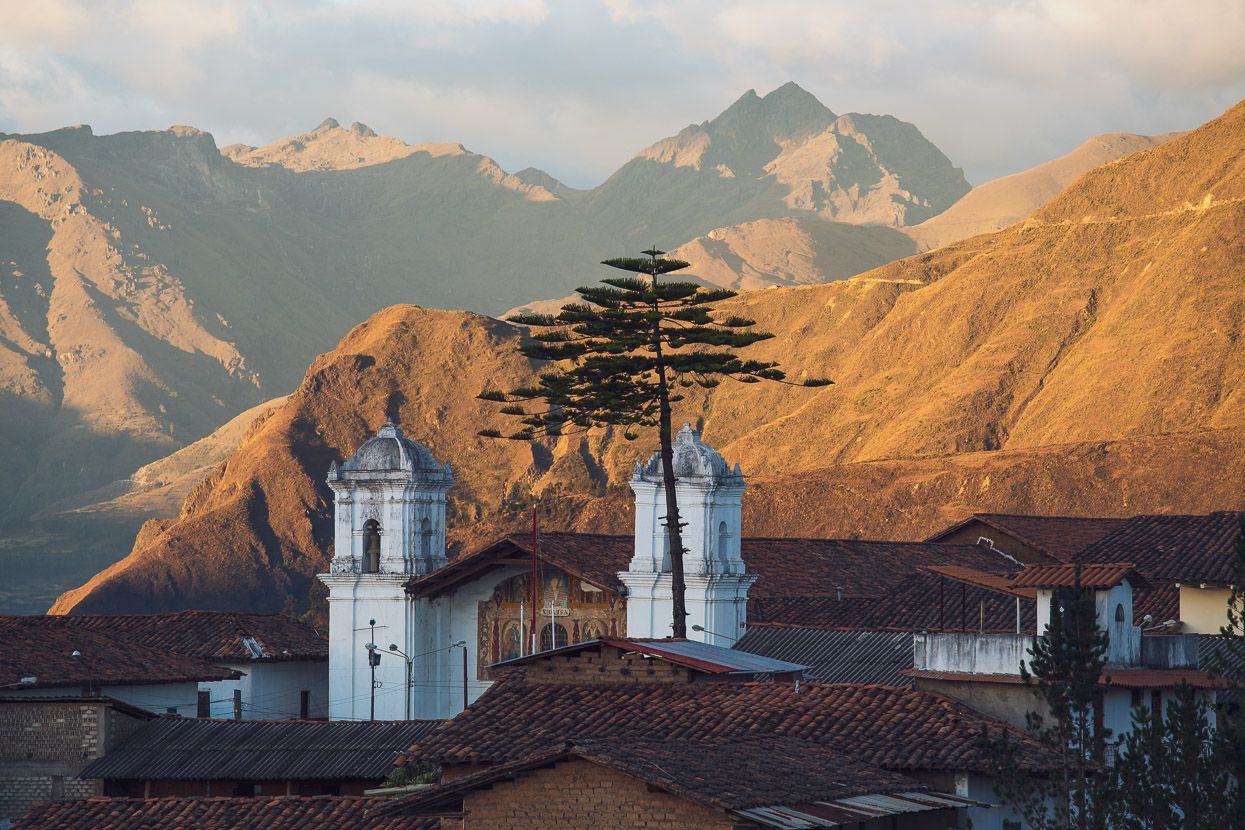
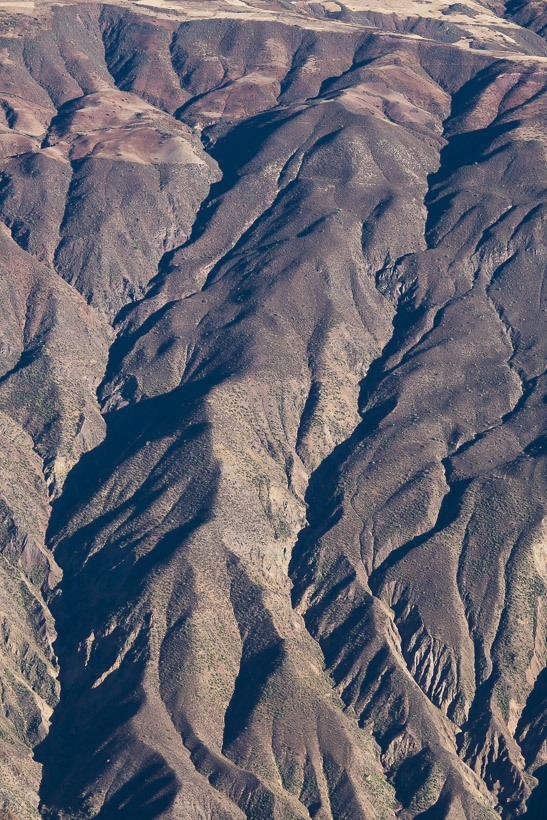
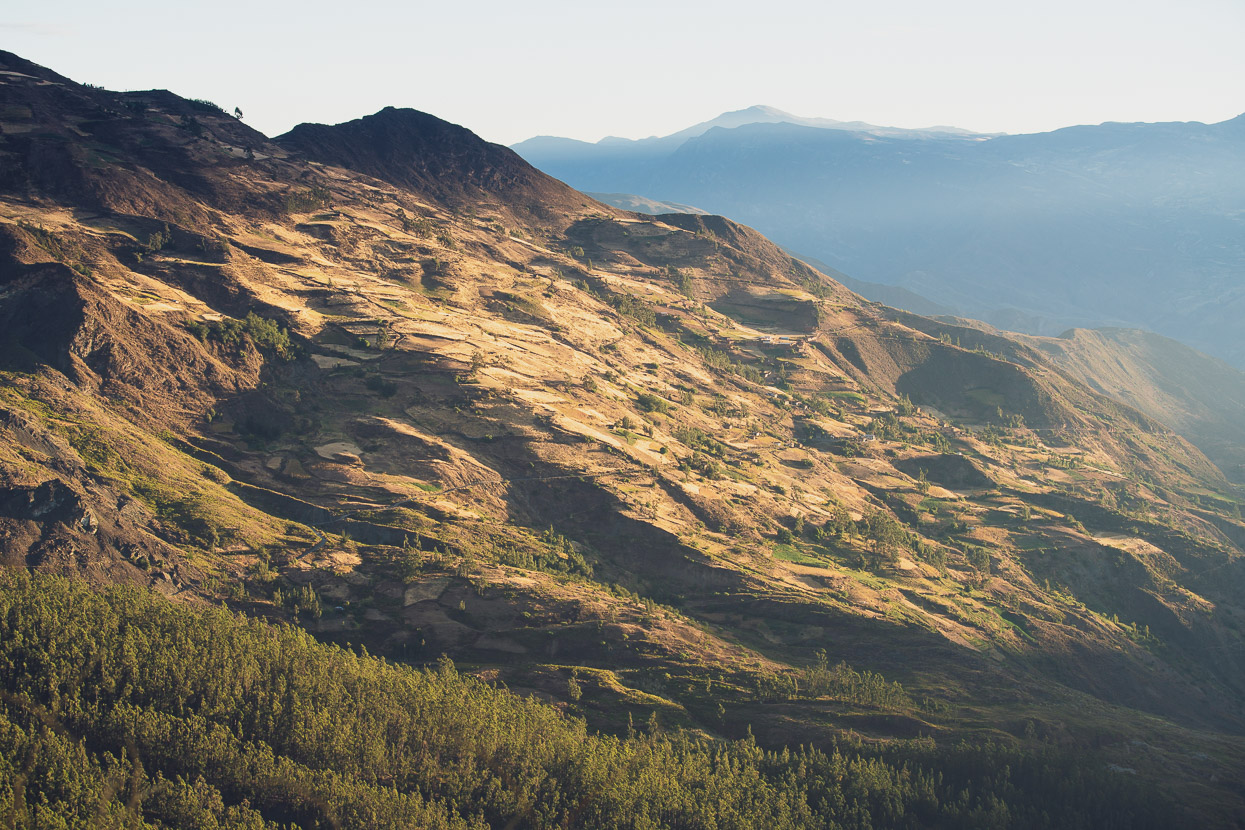
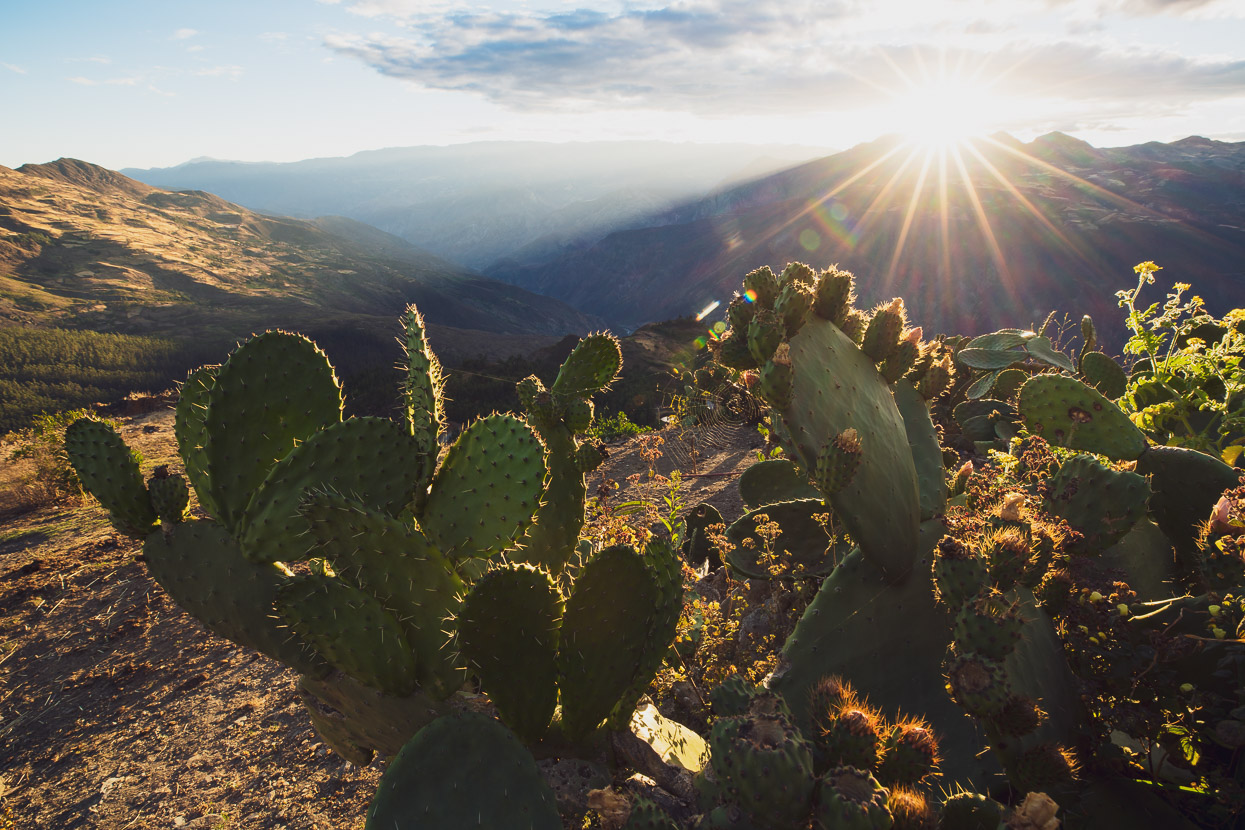
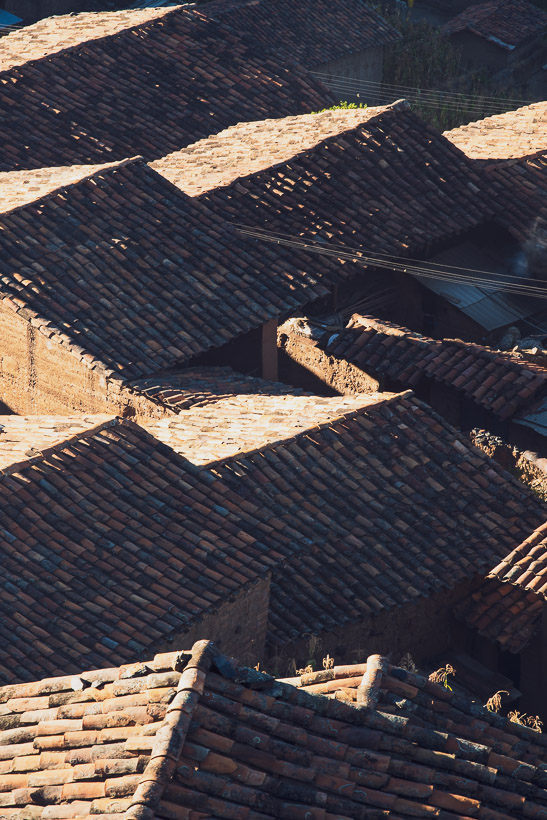
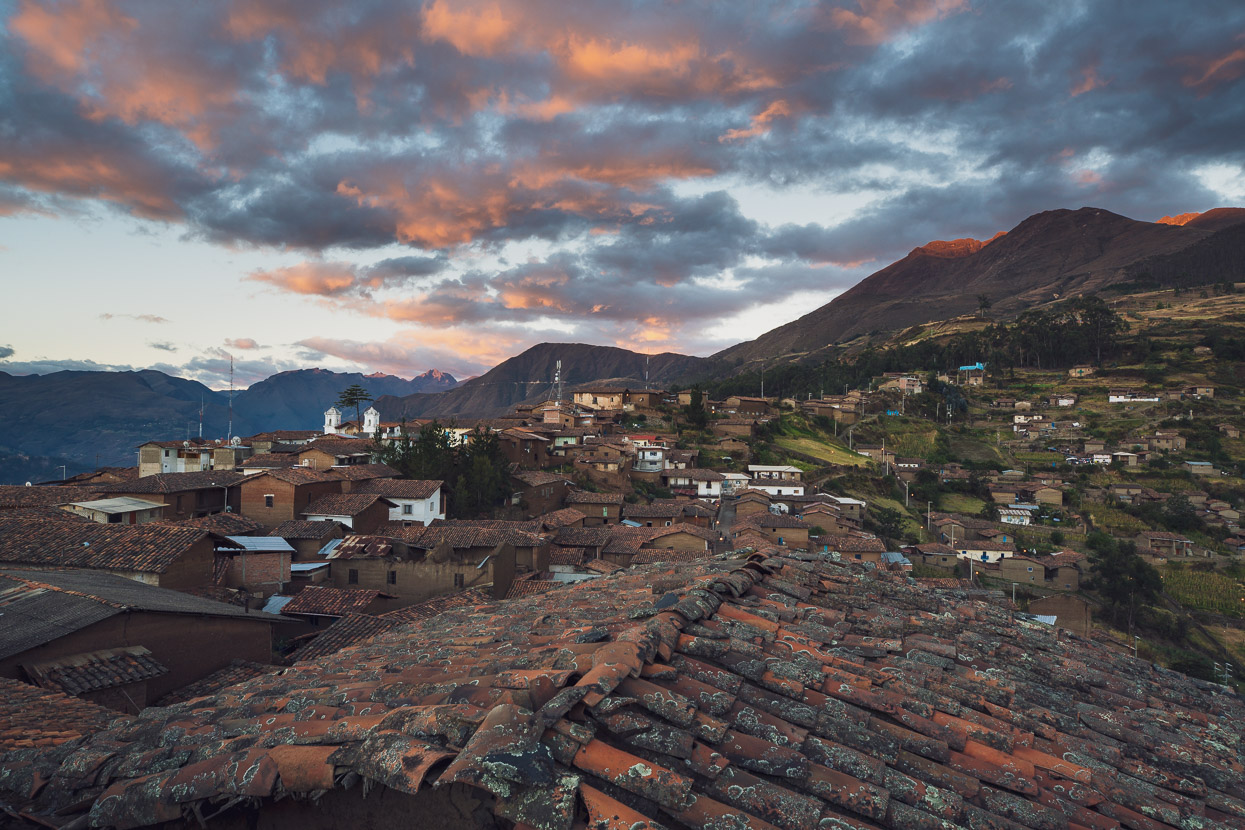





Superb reportage Mark!
Thank you Reynan!